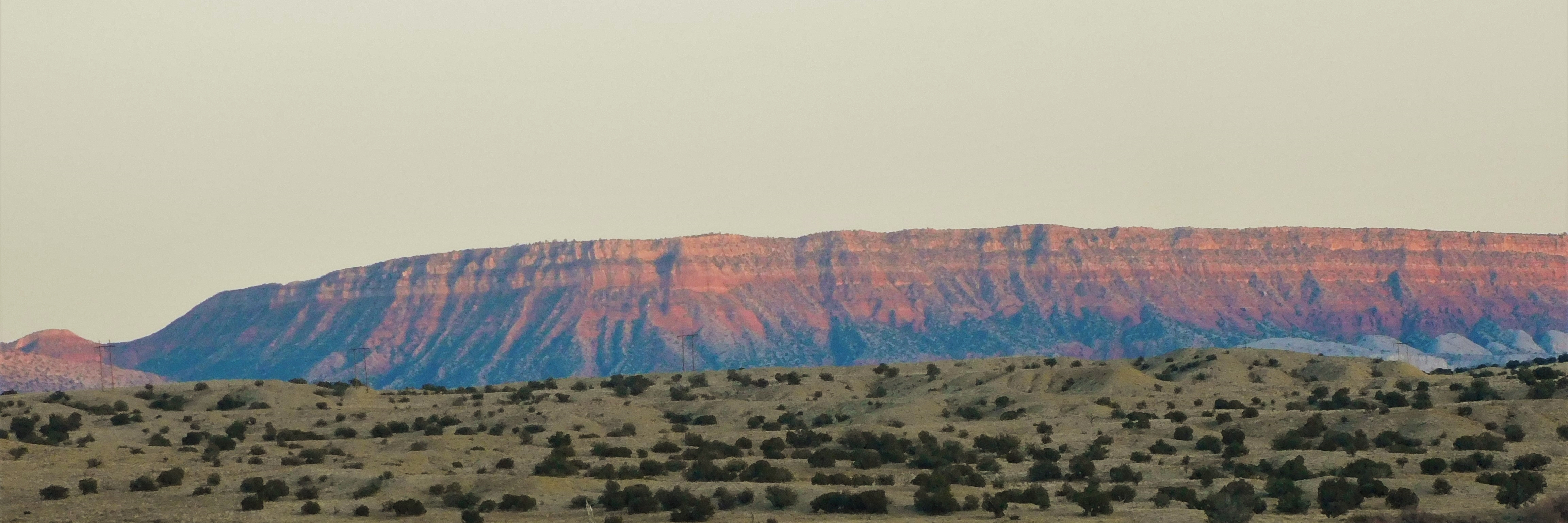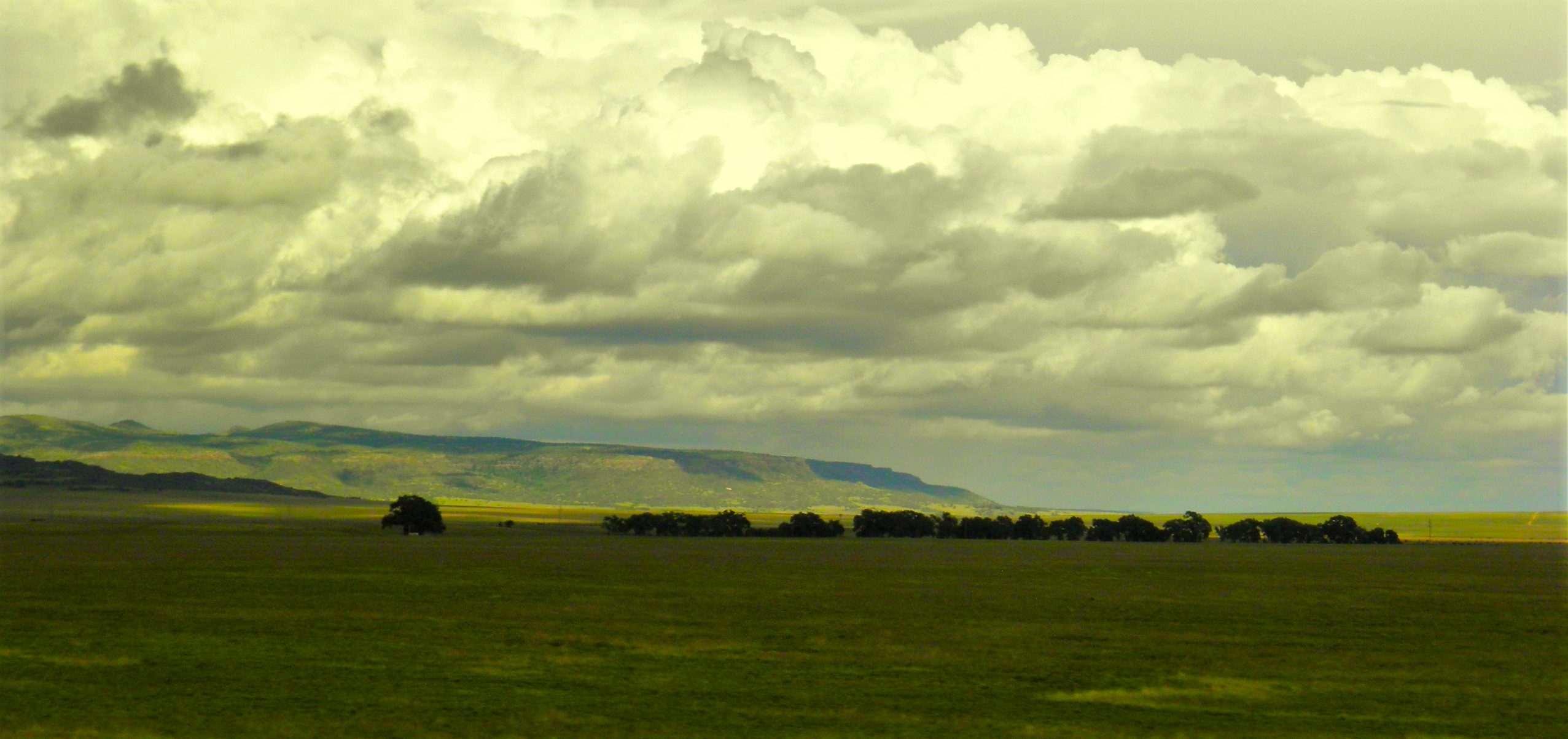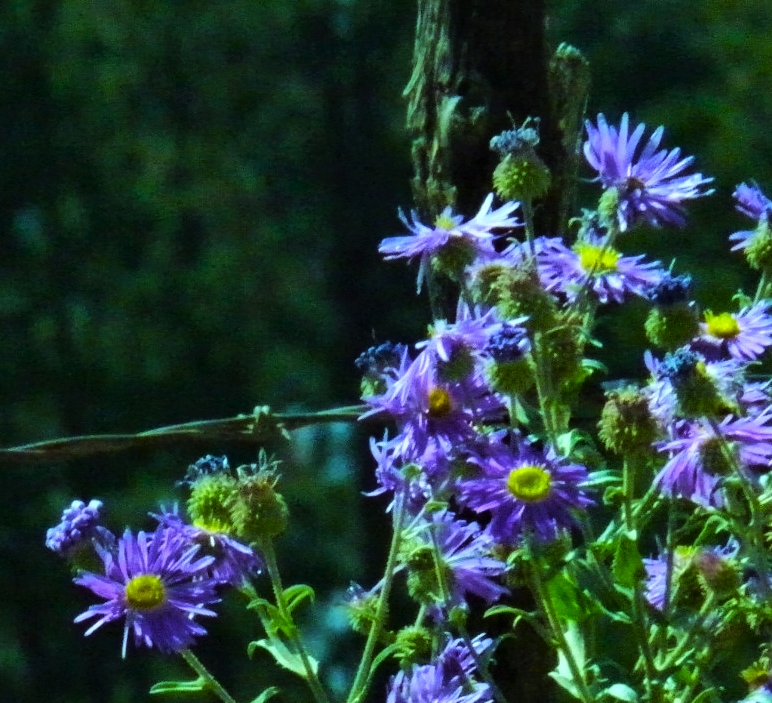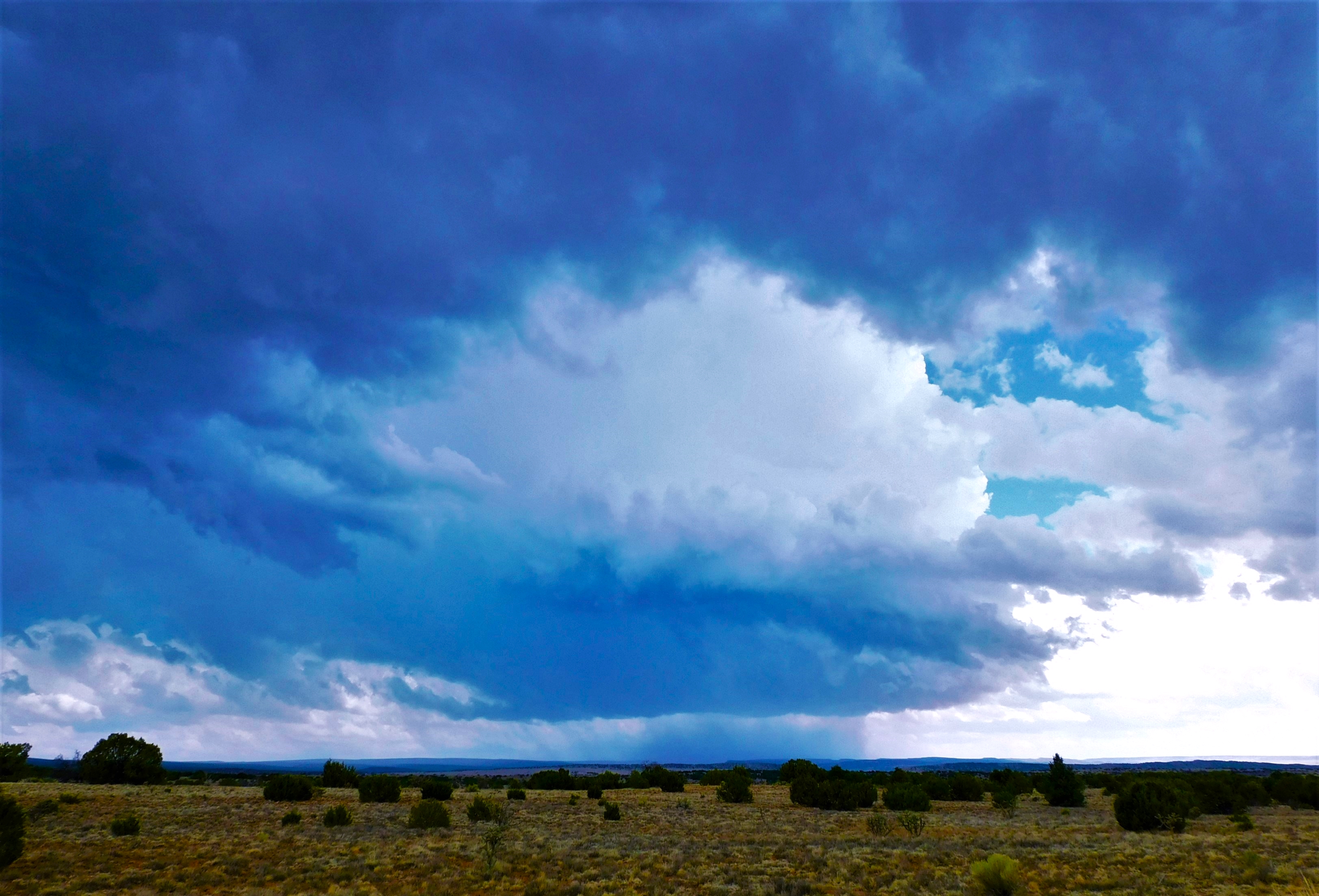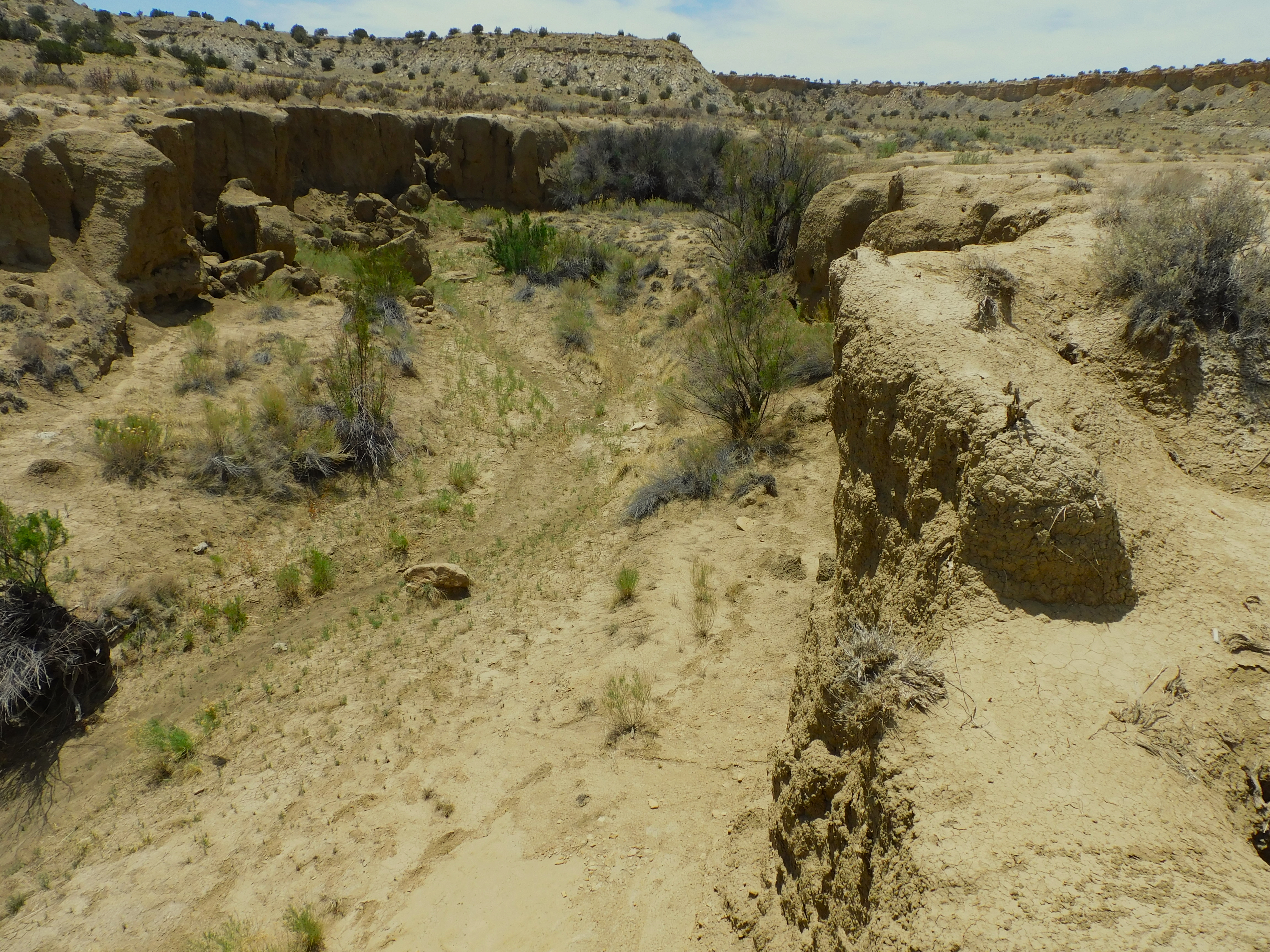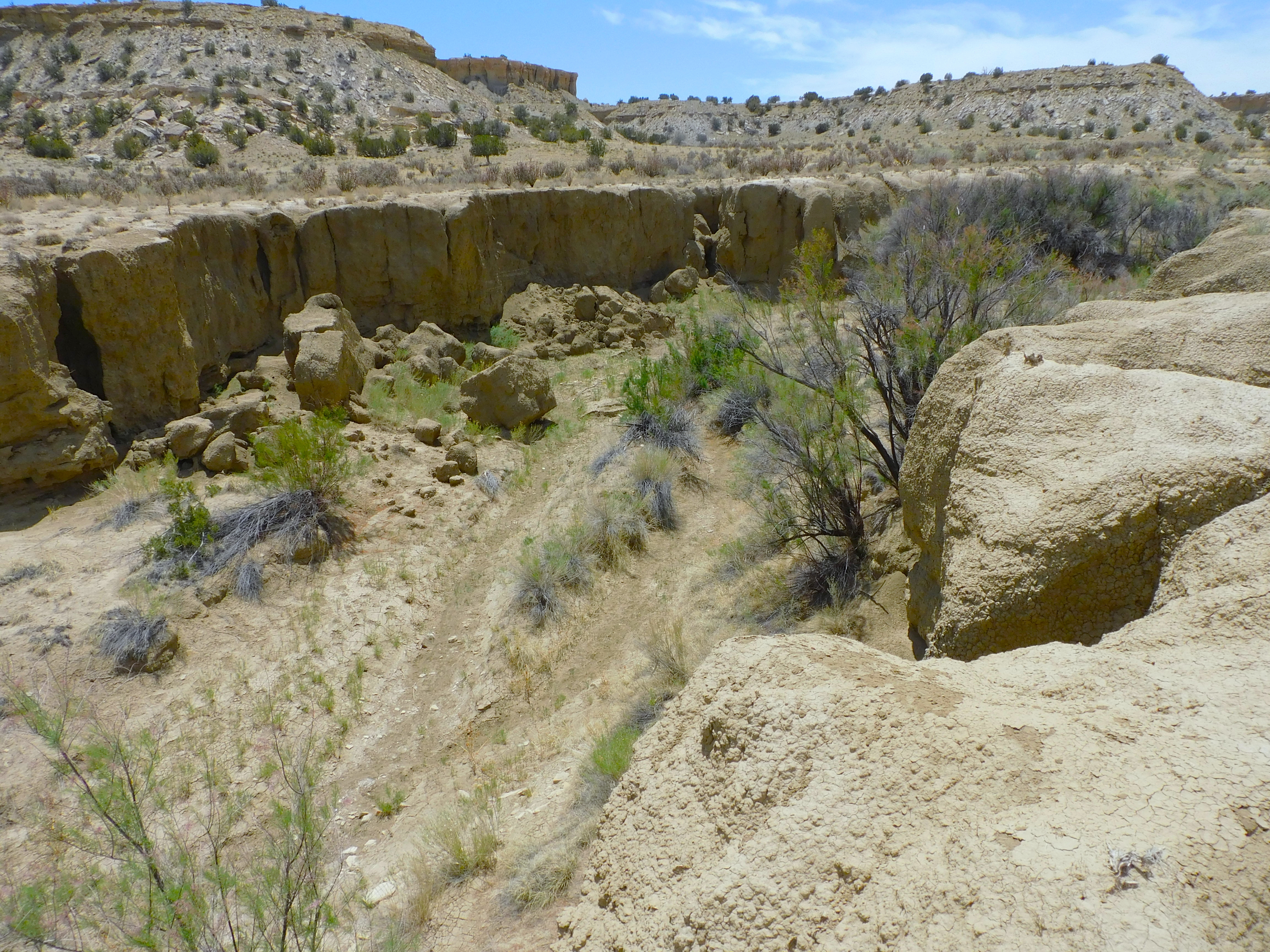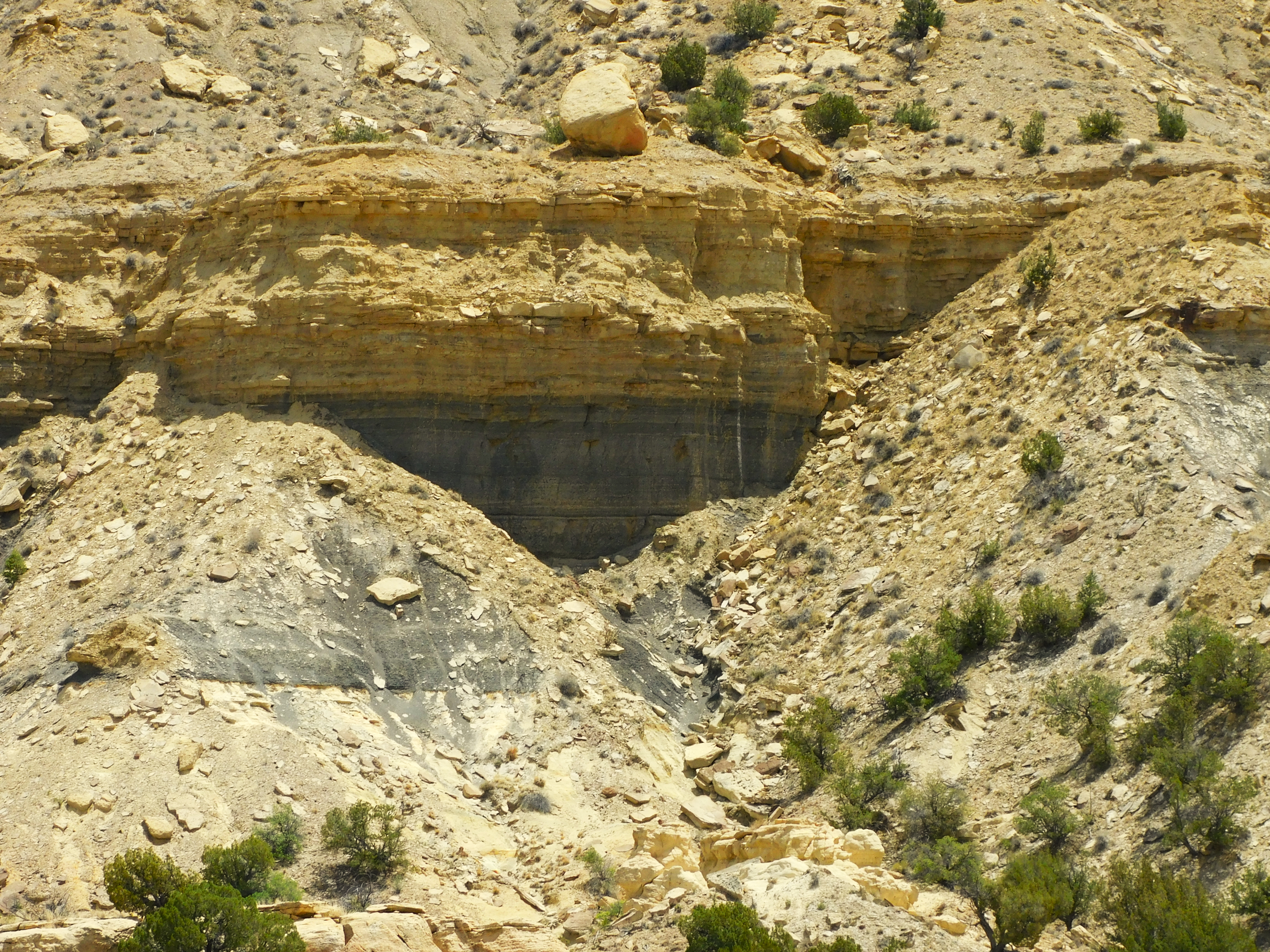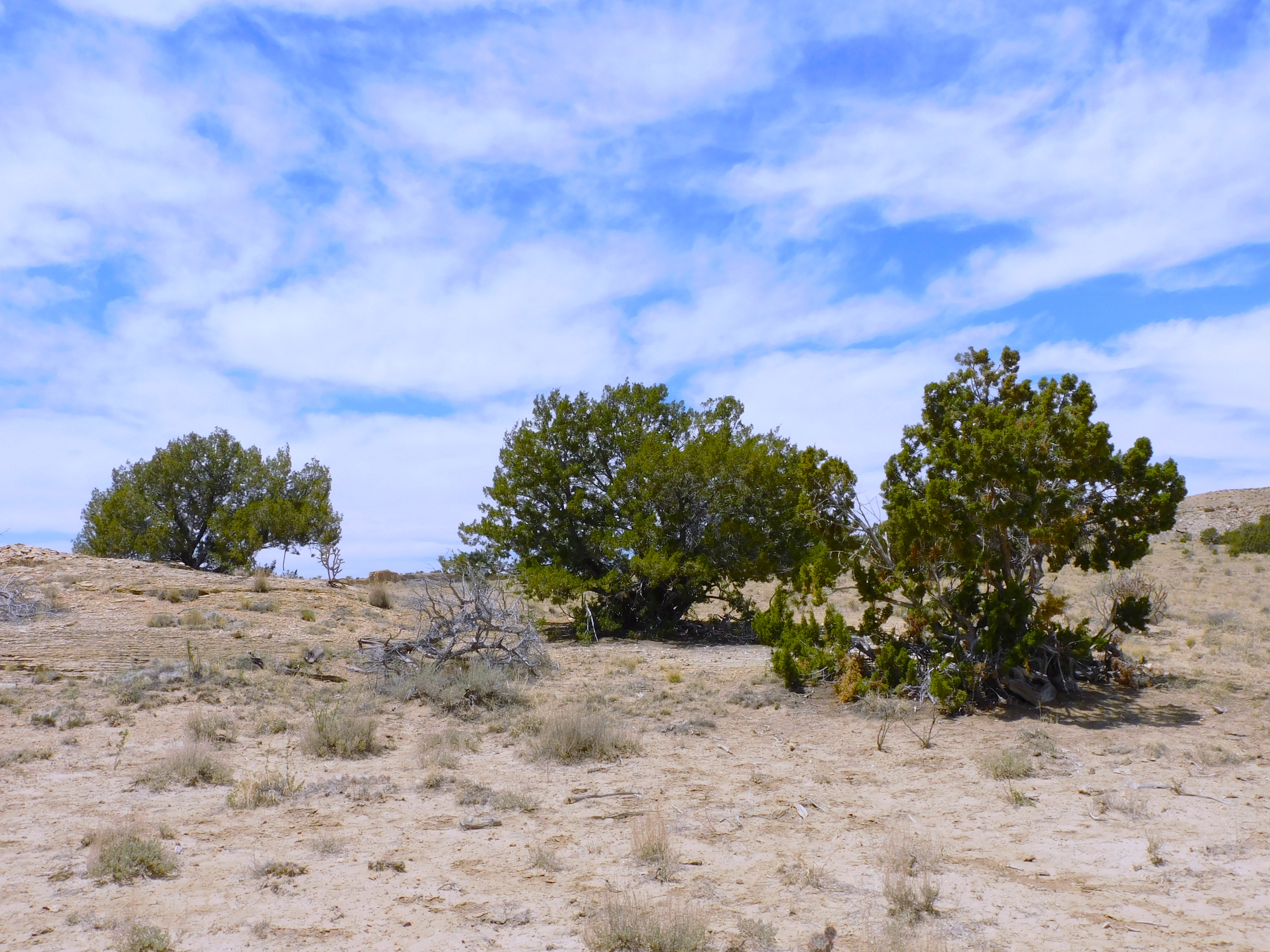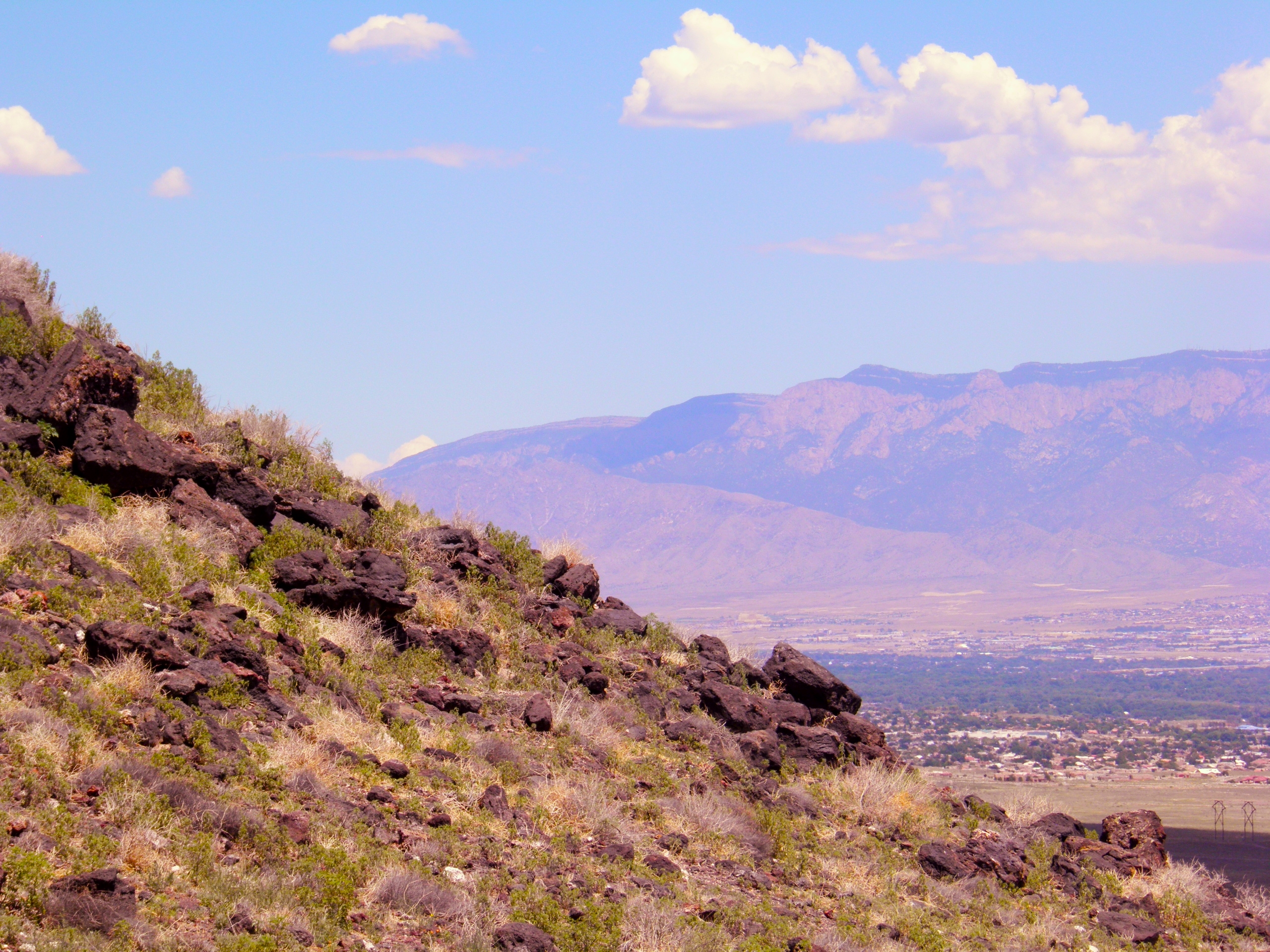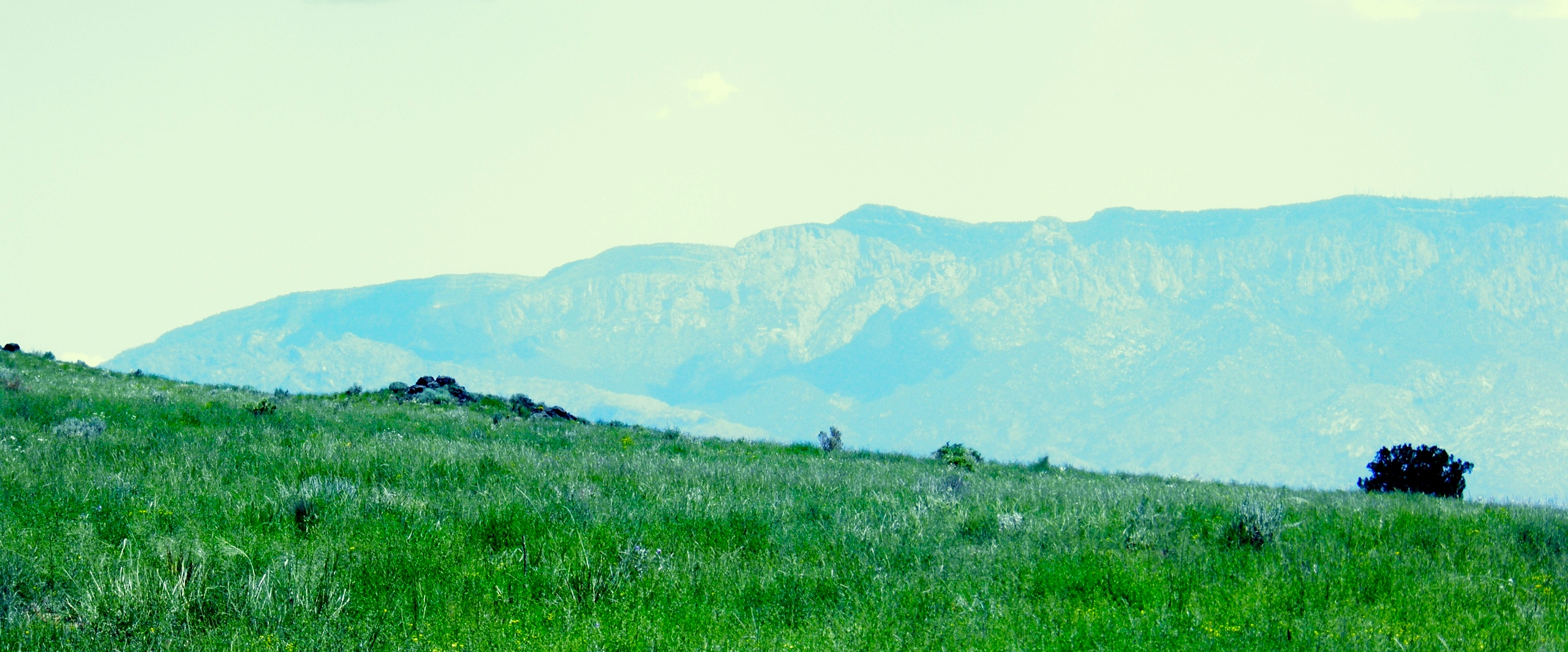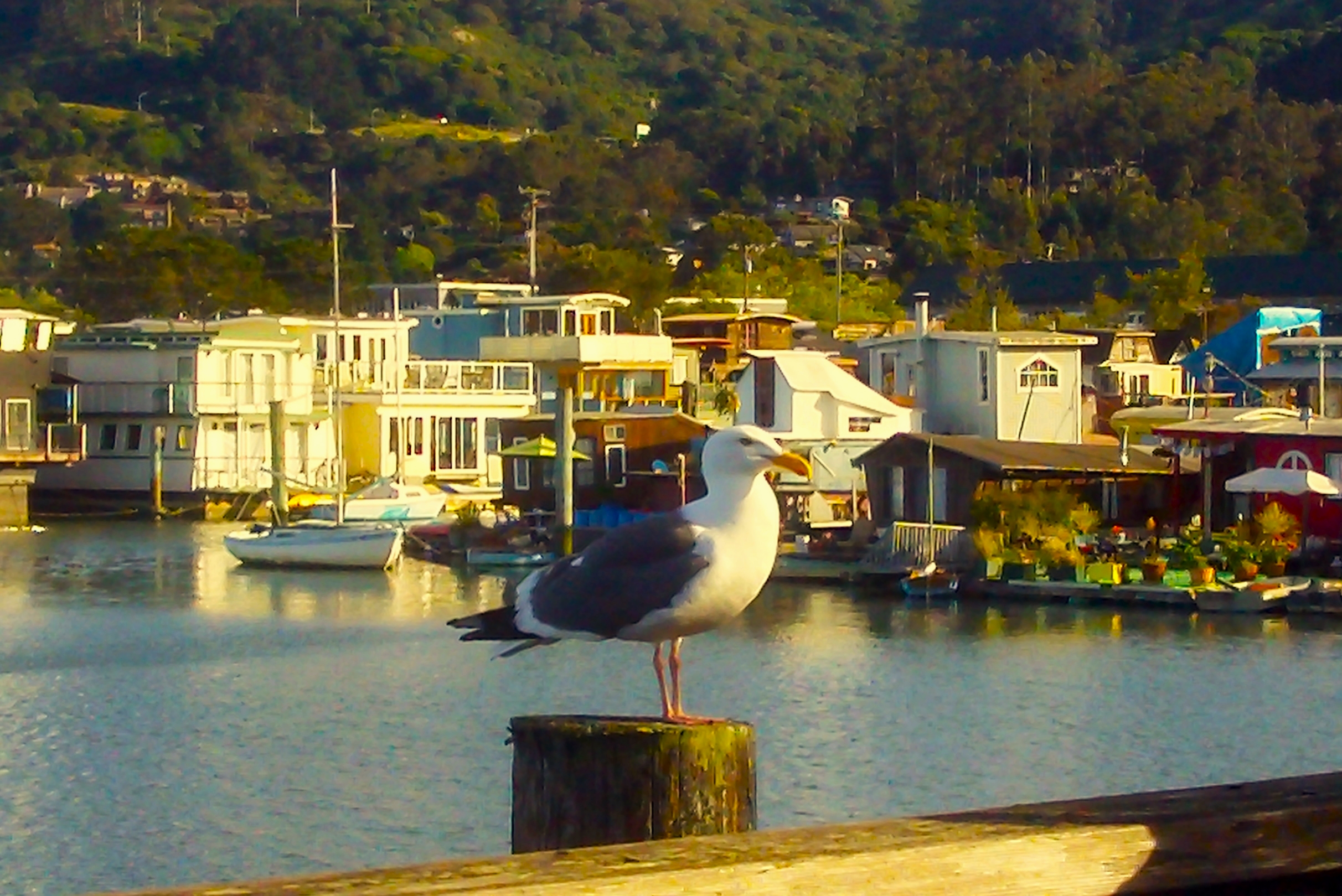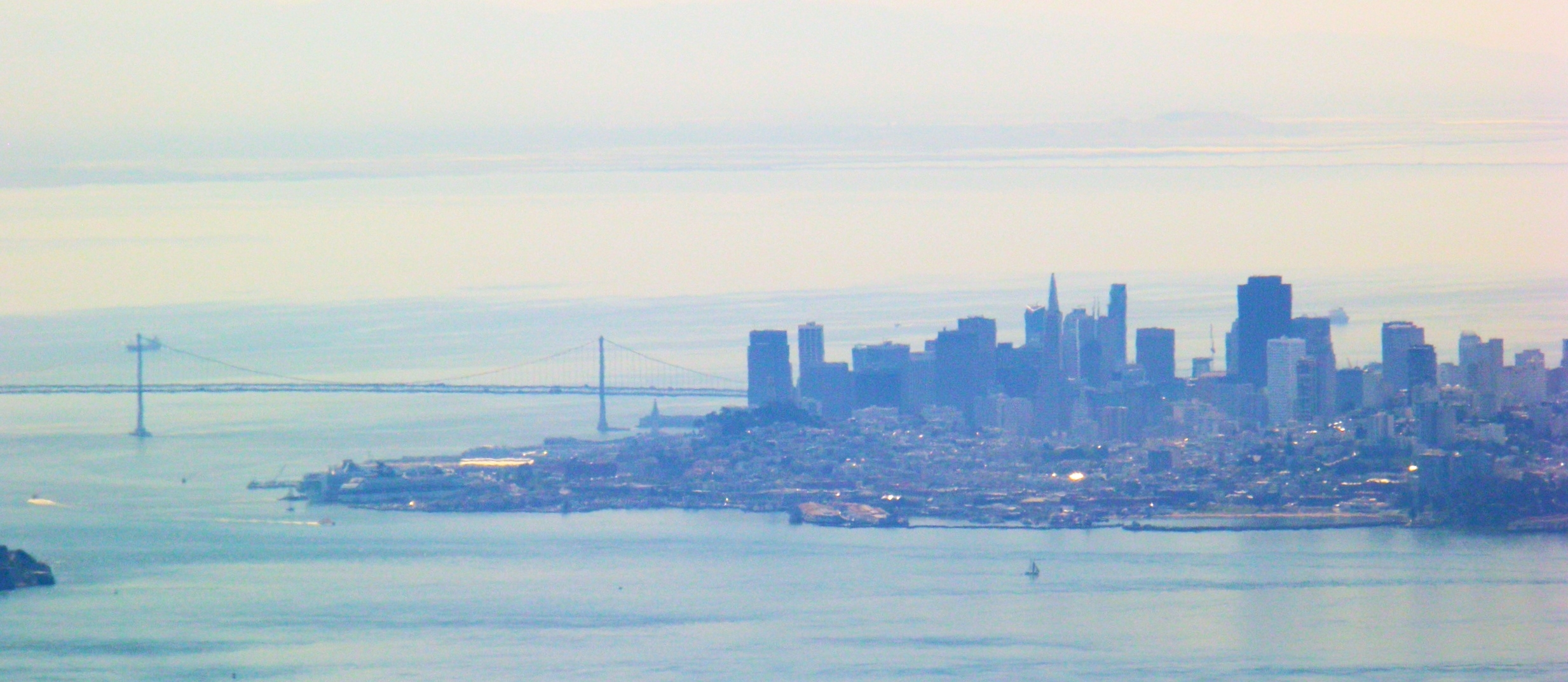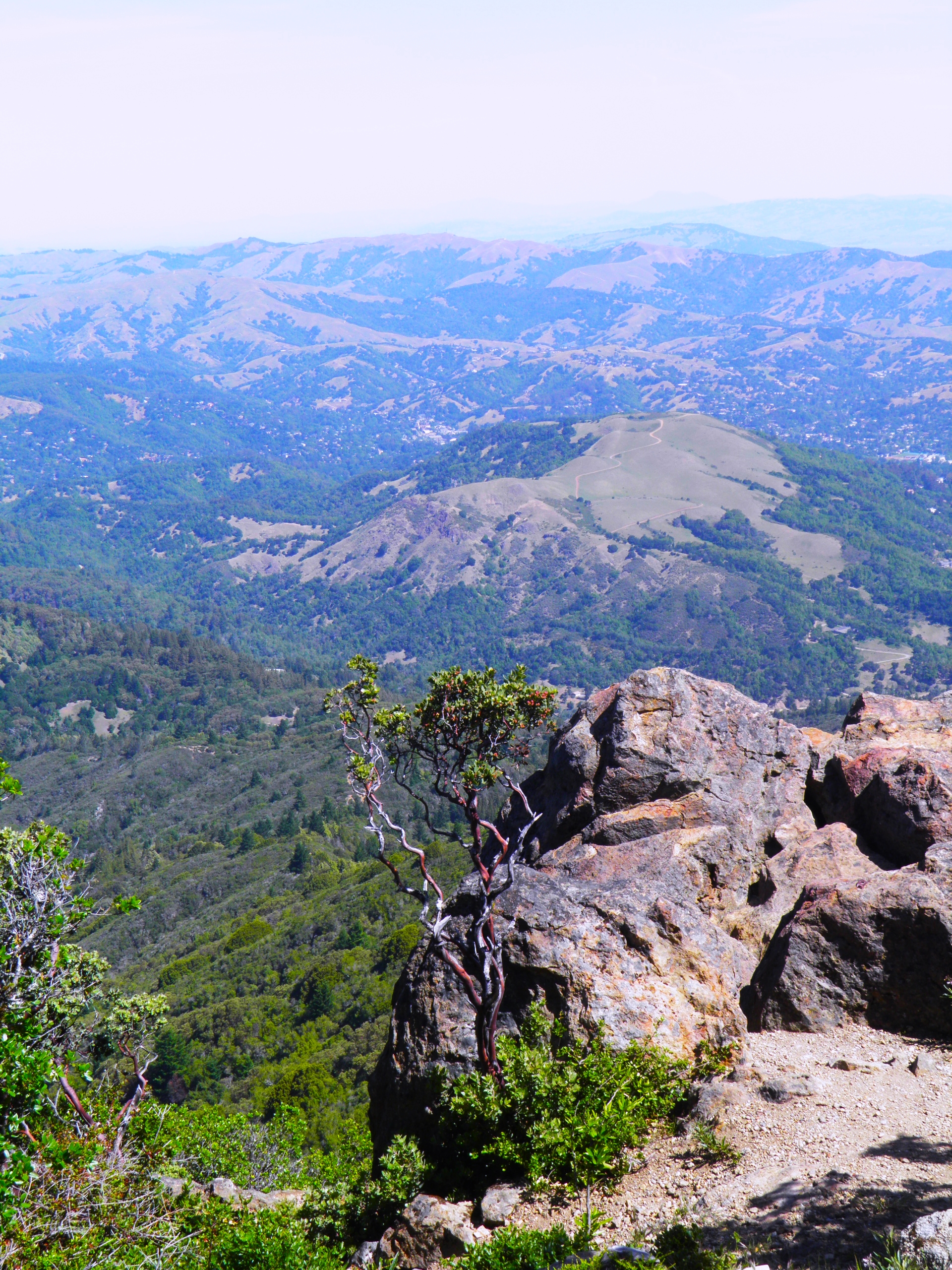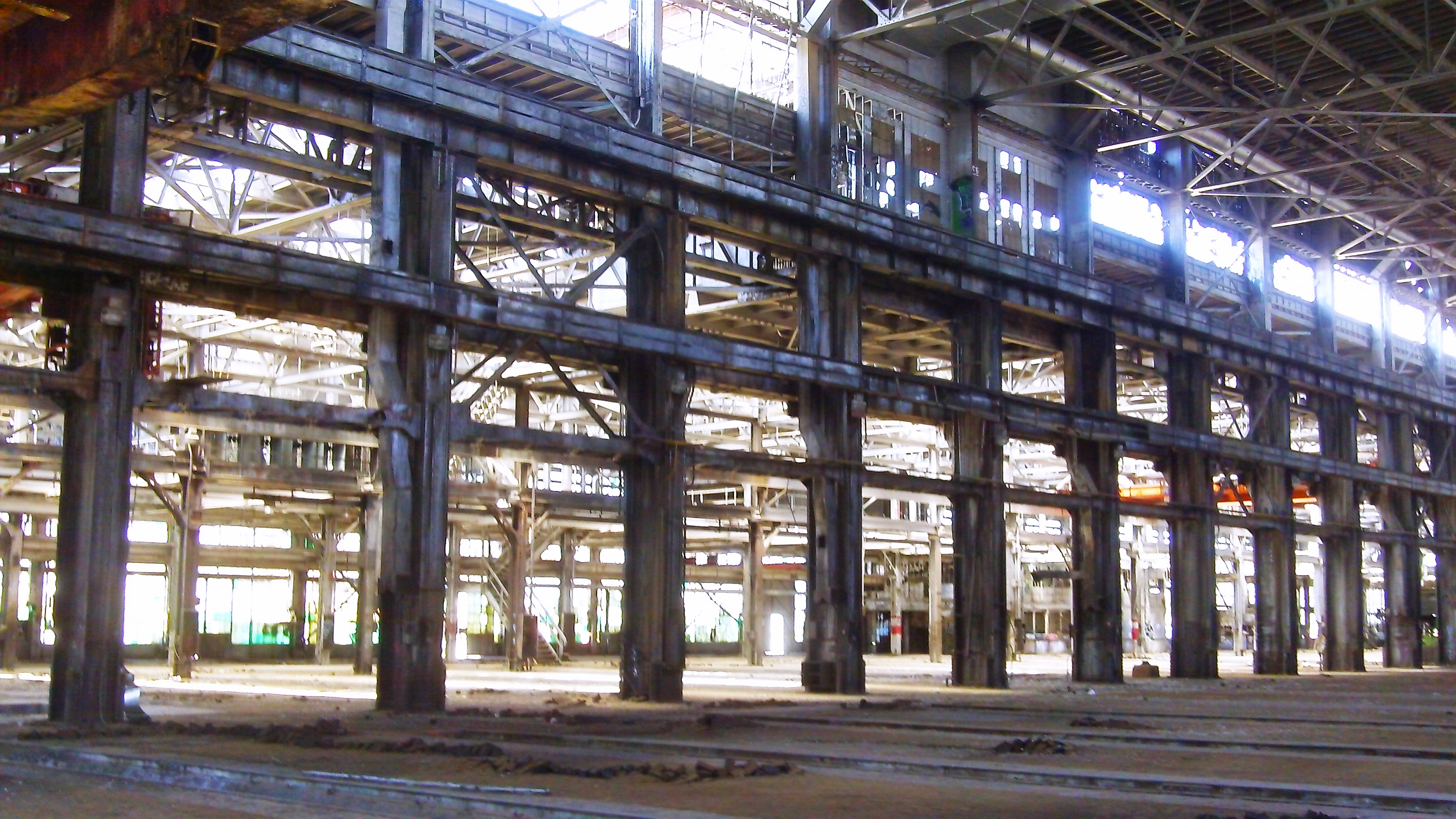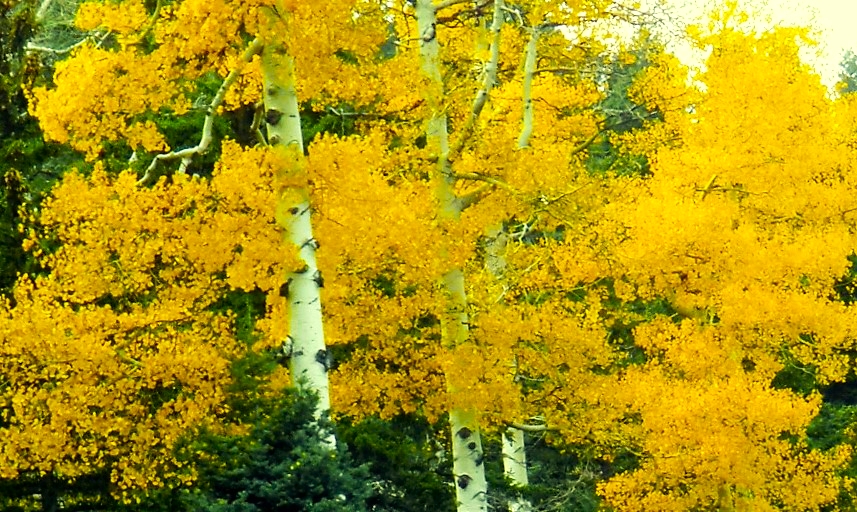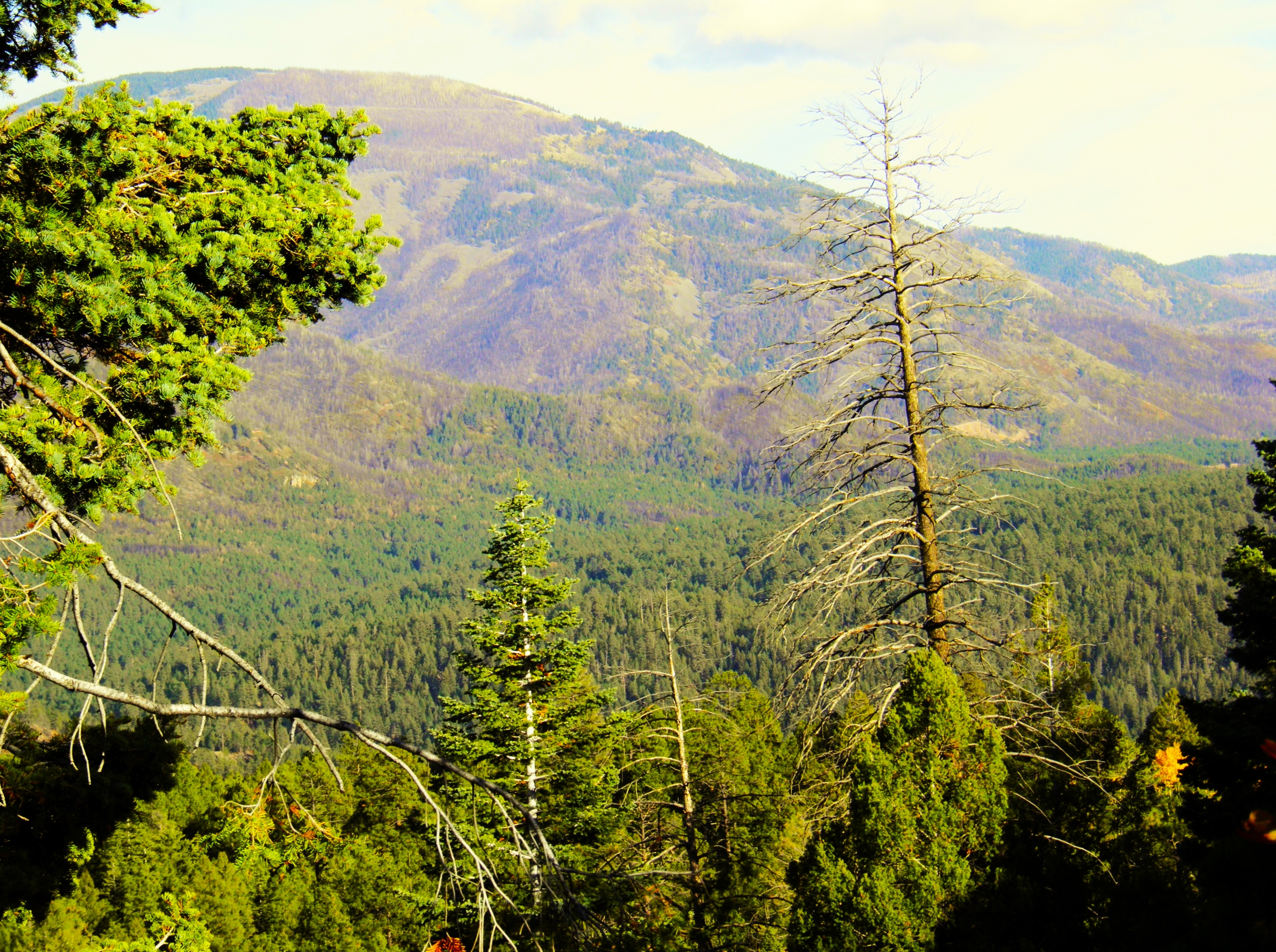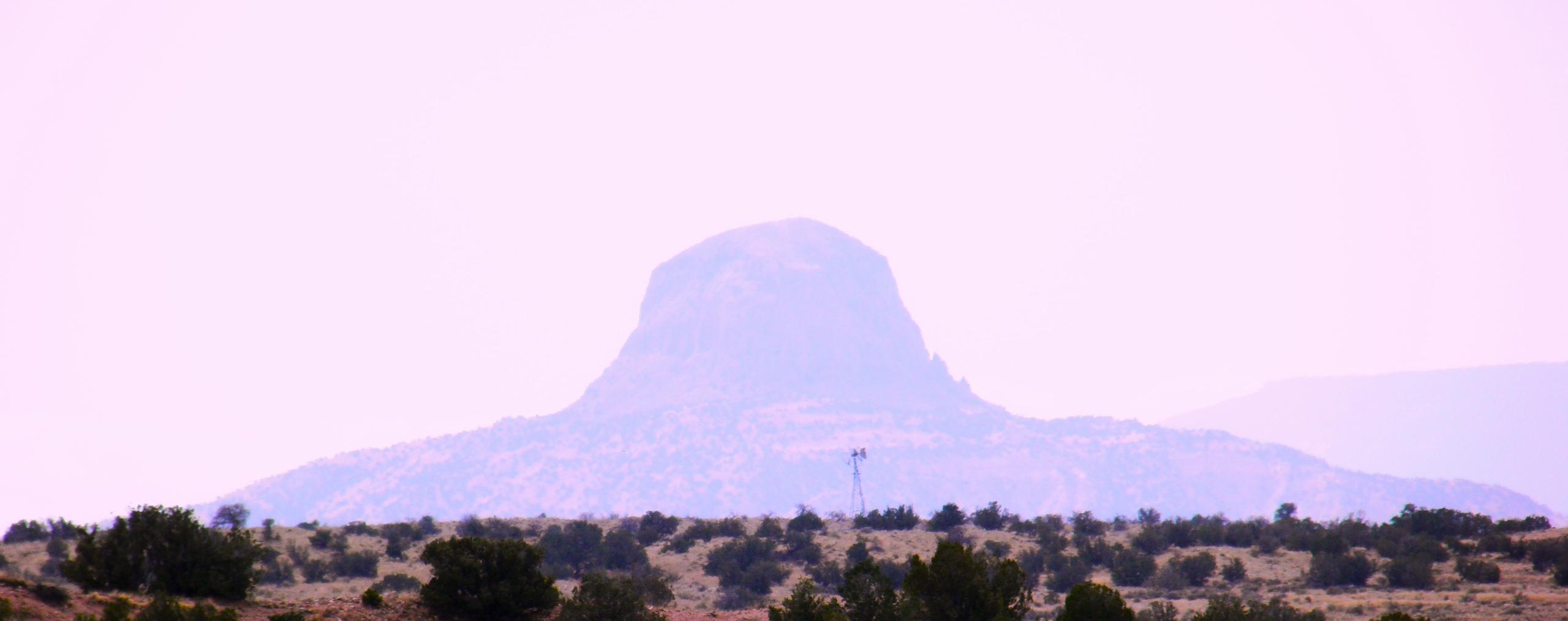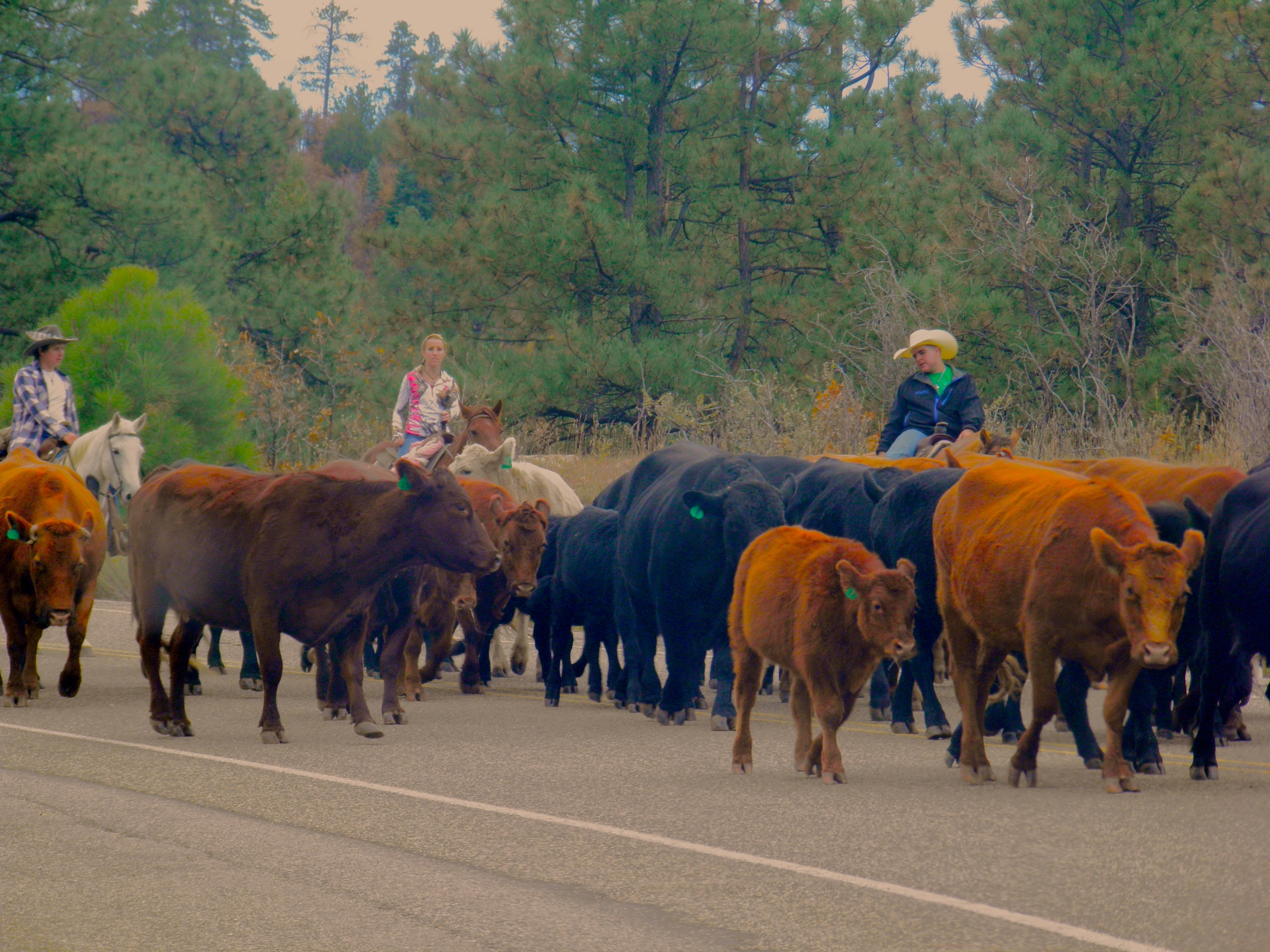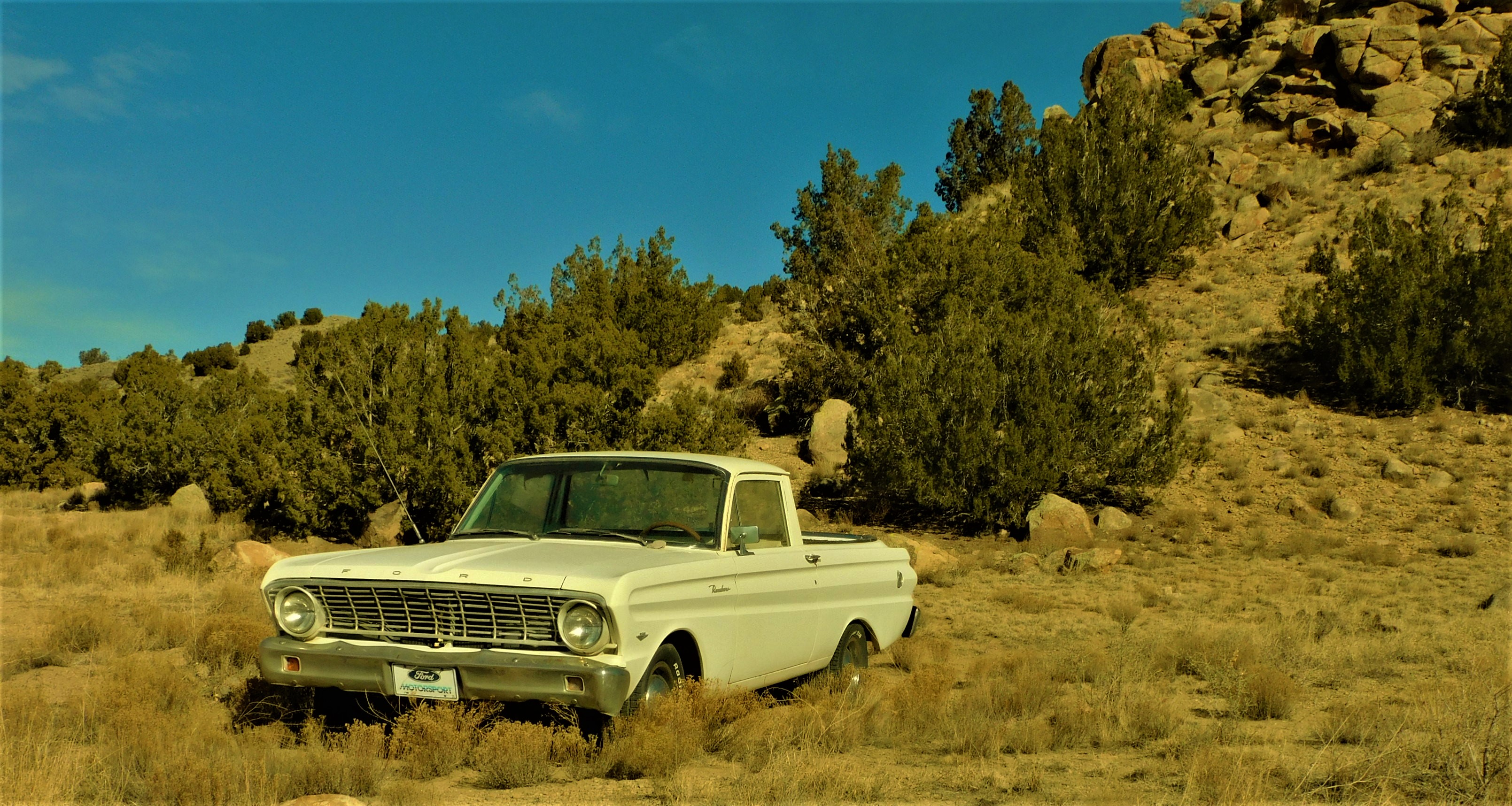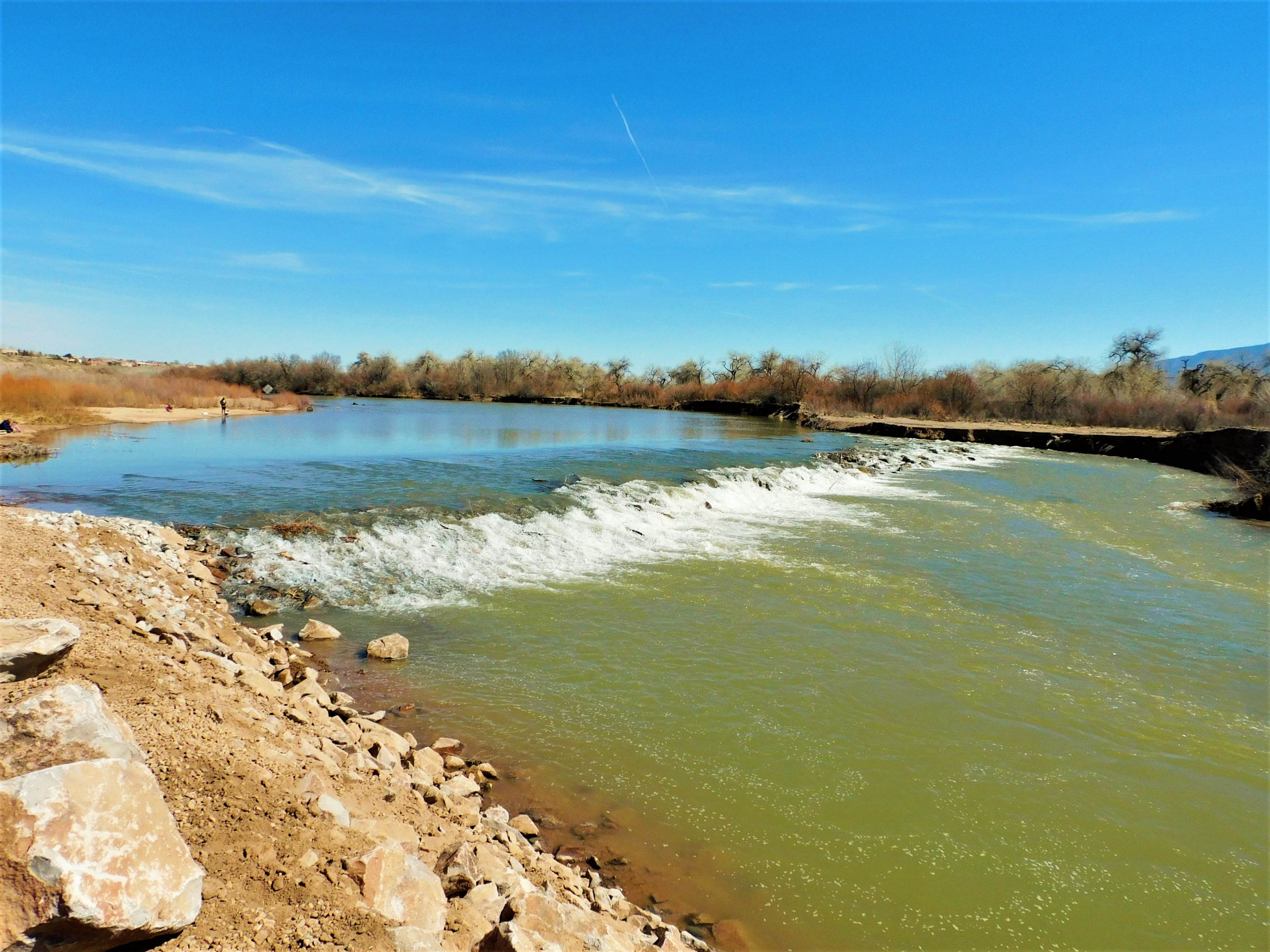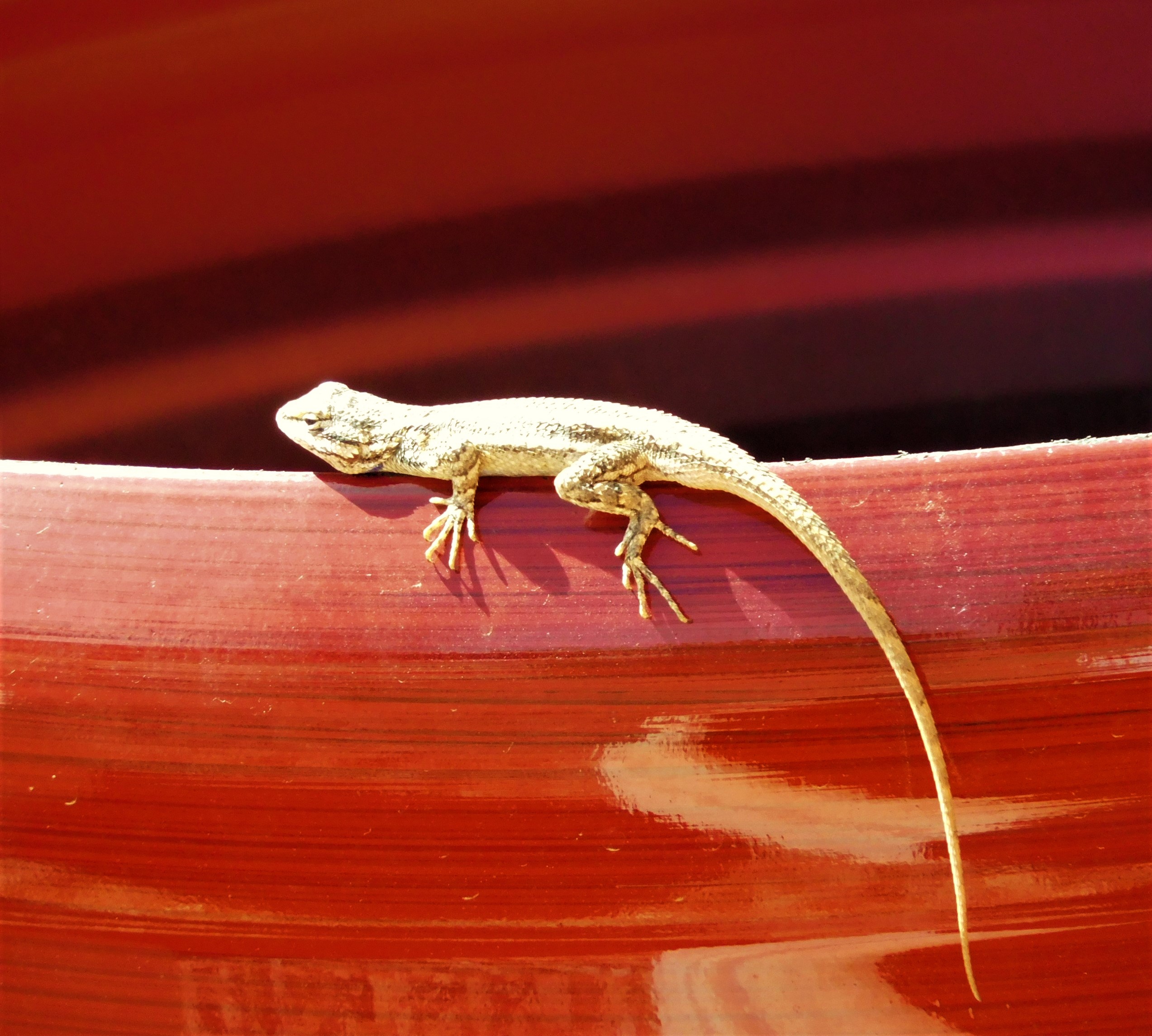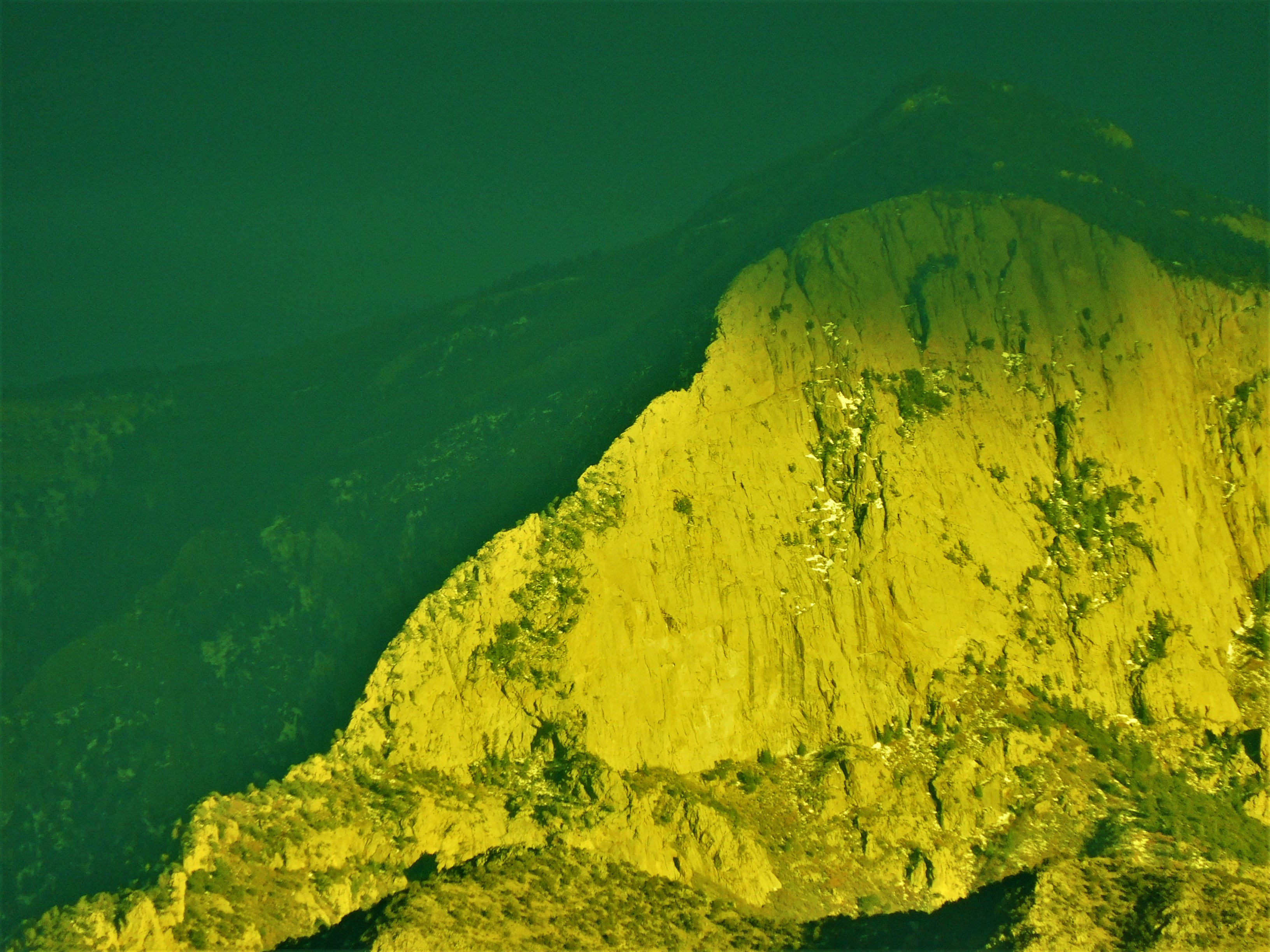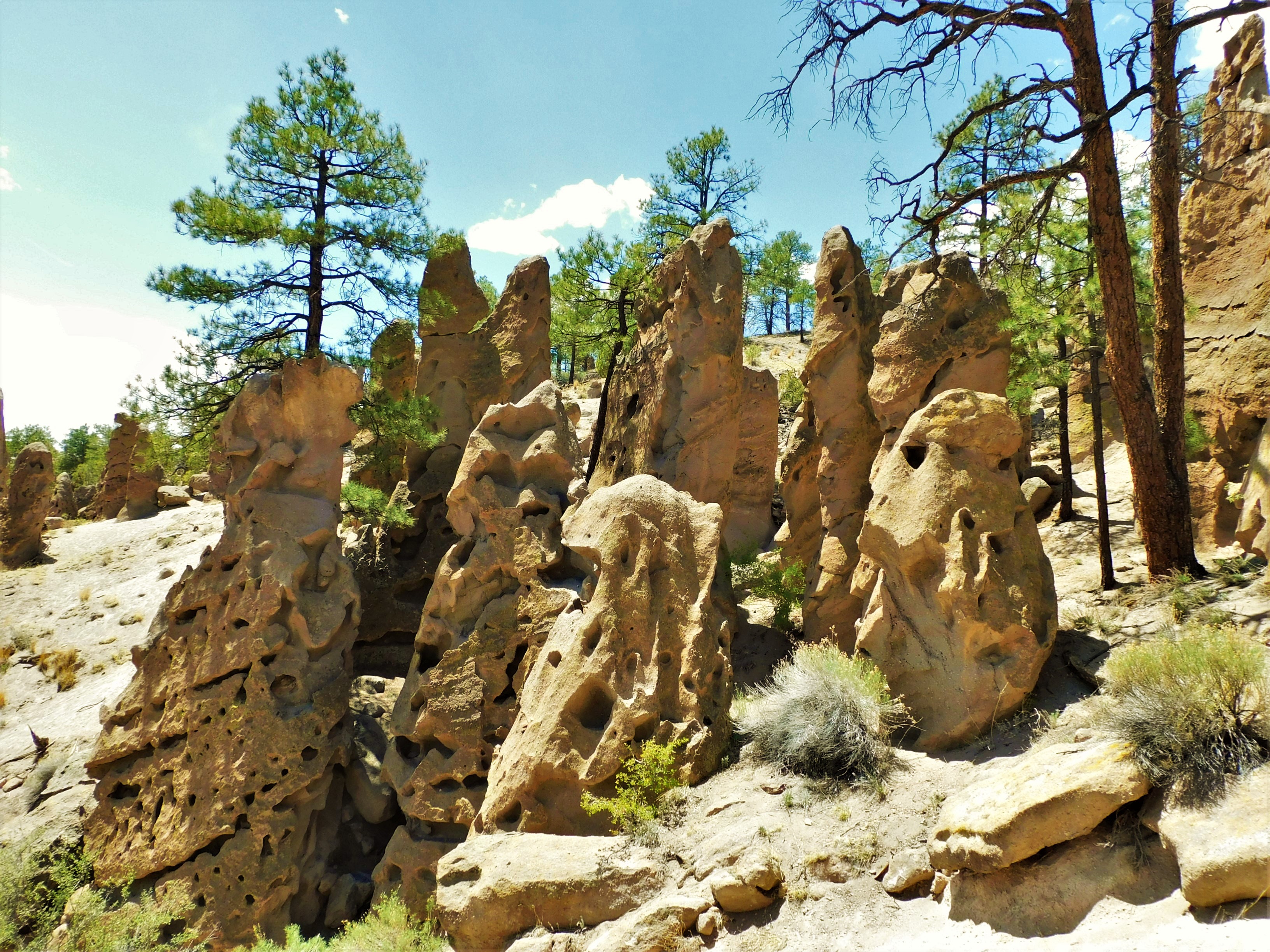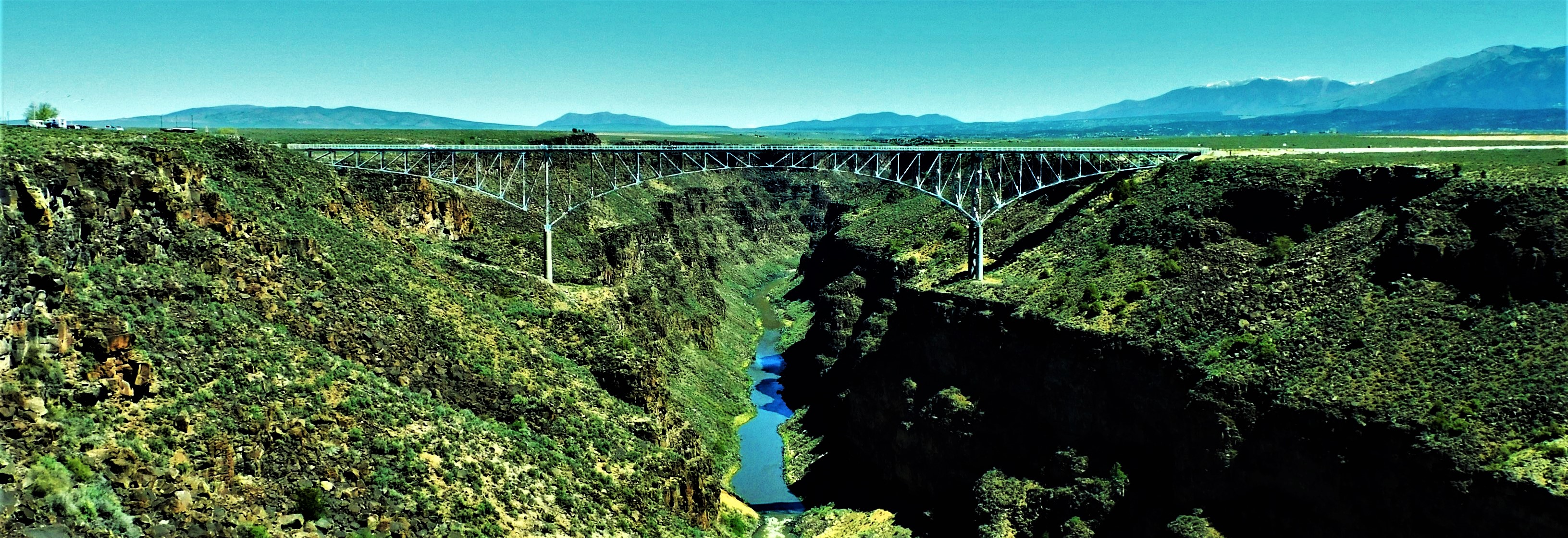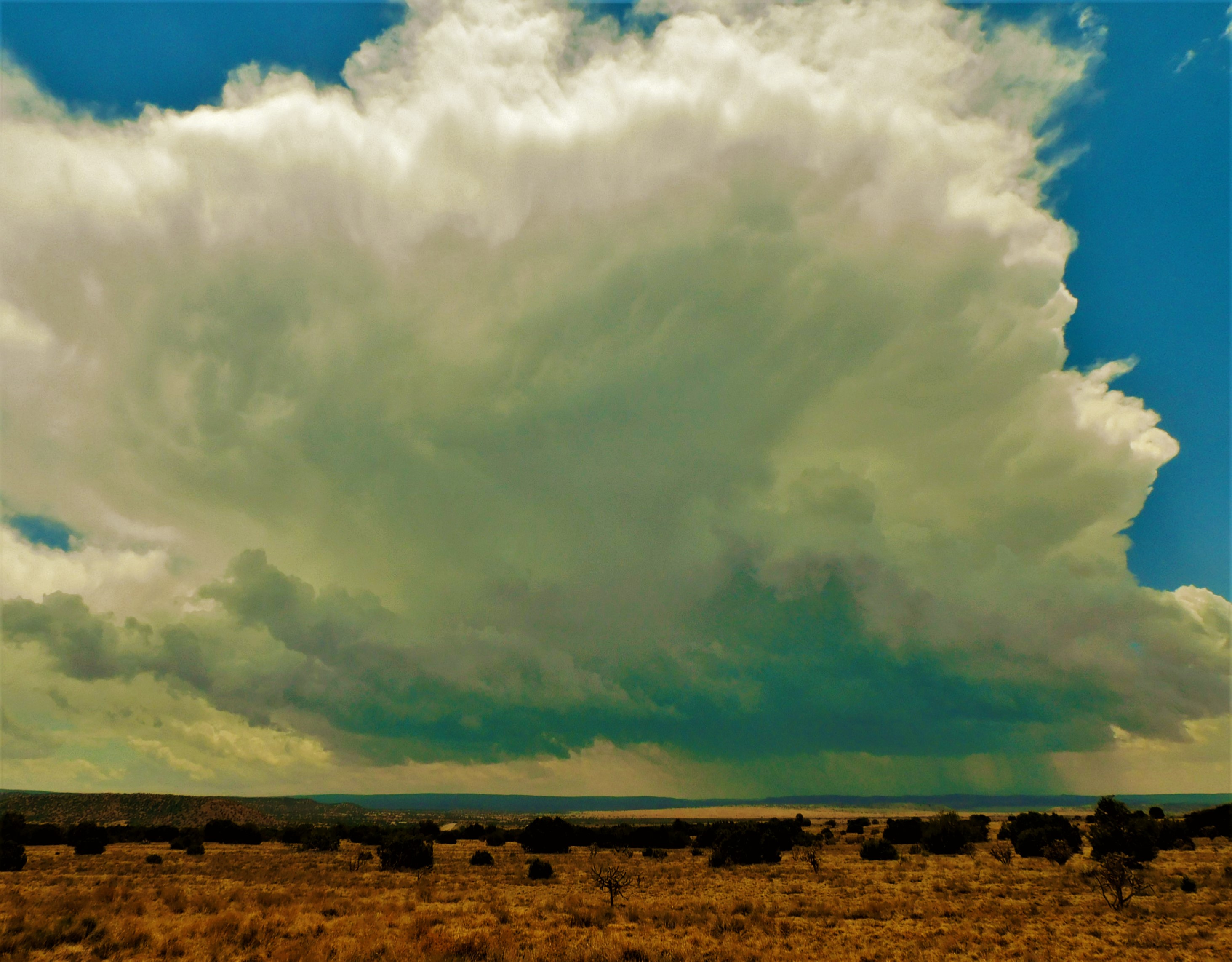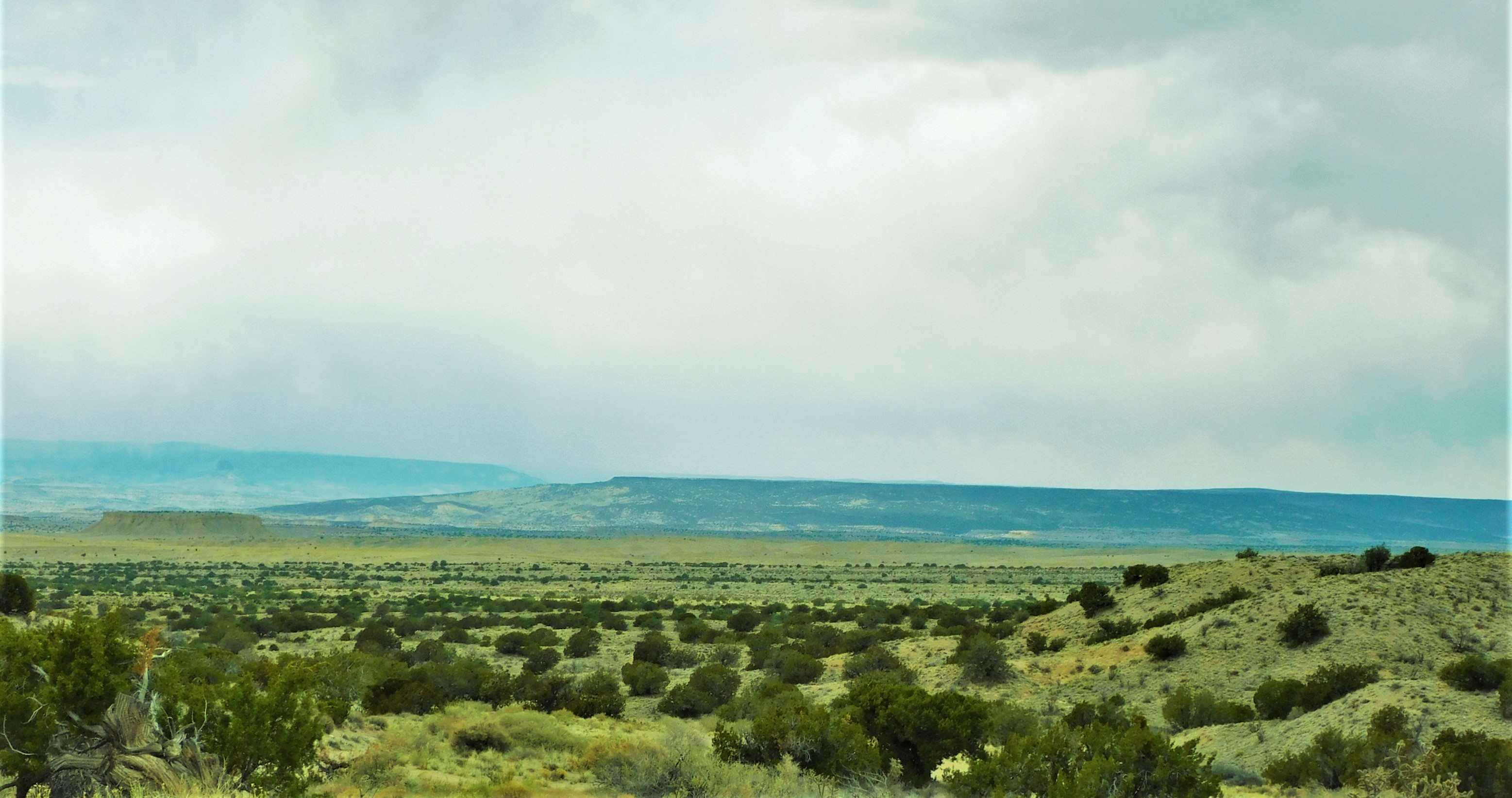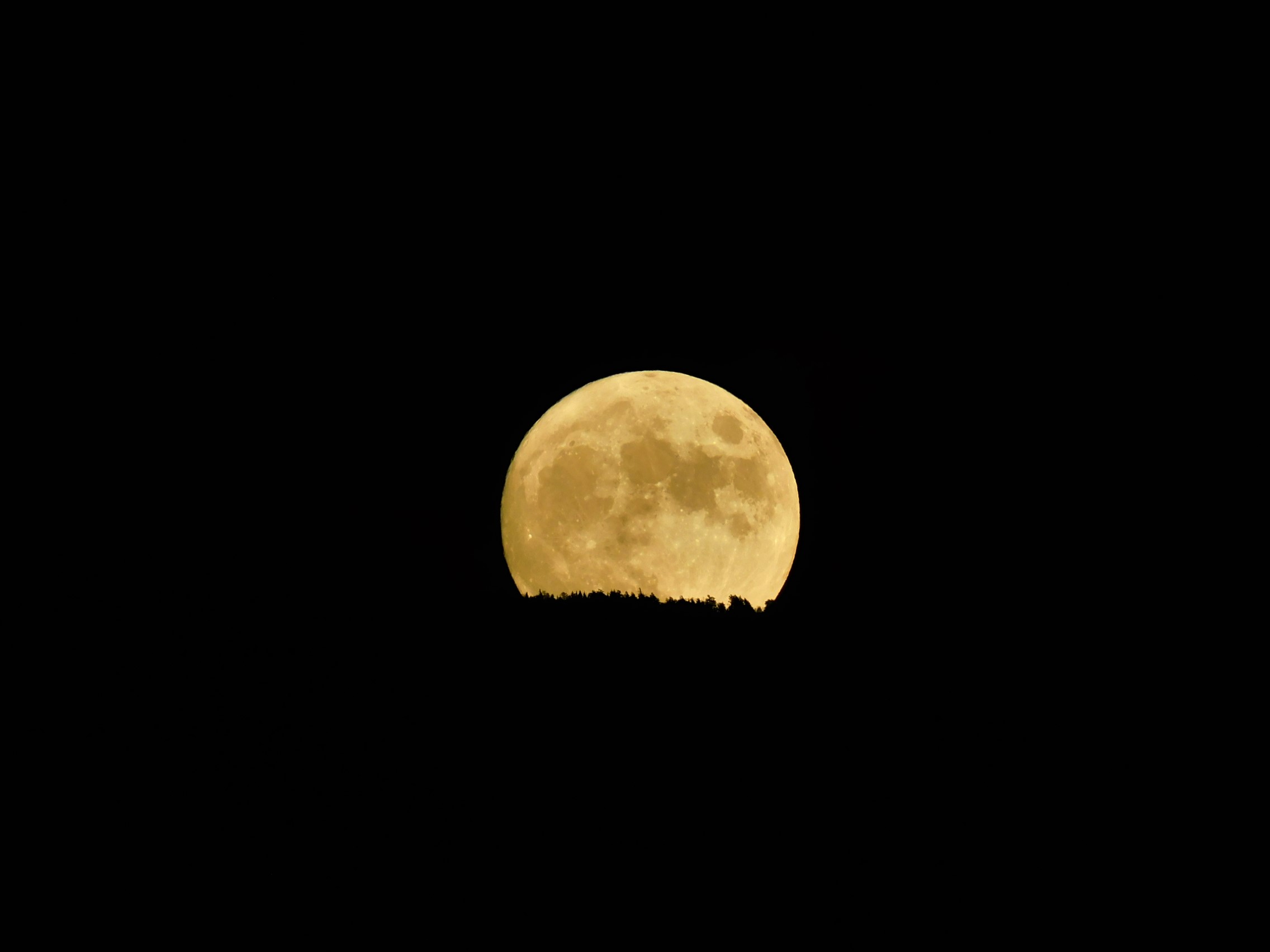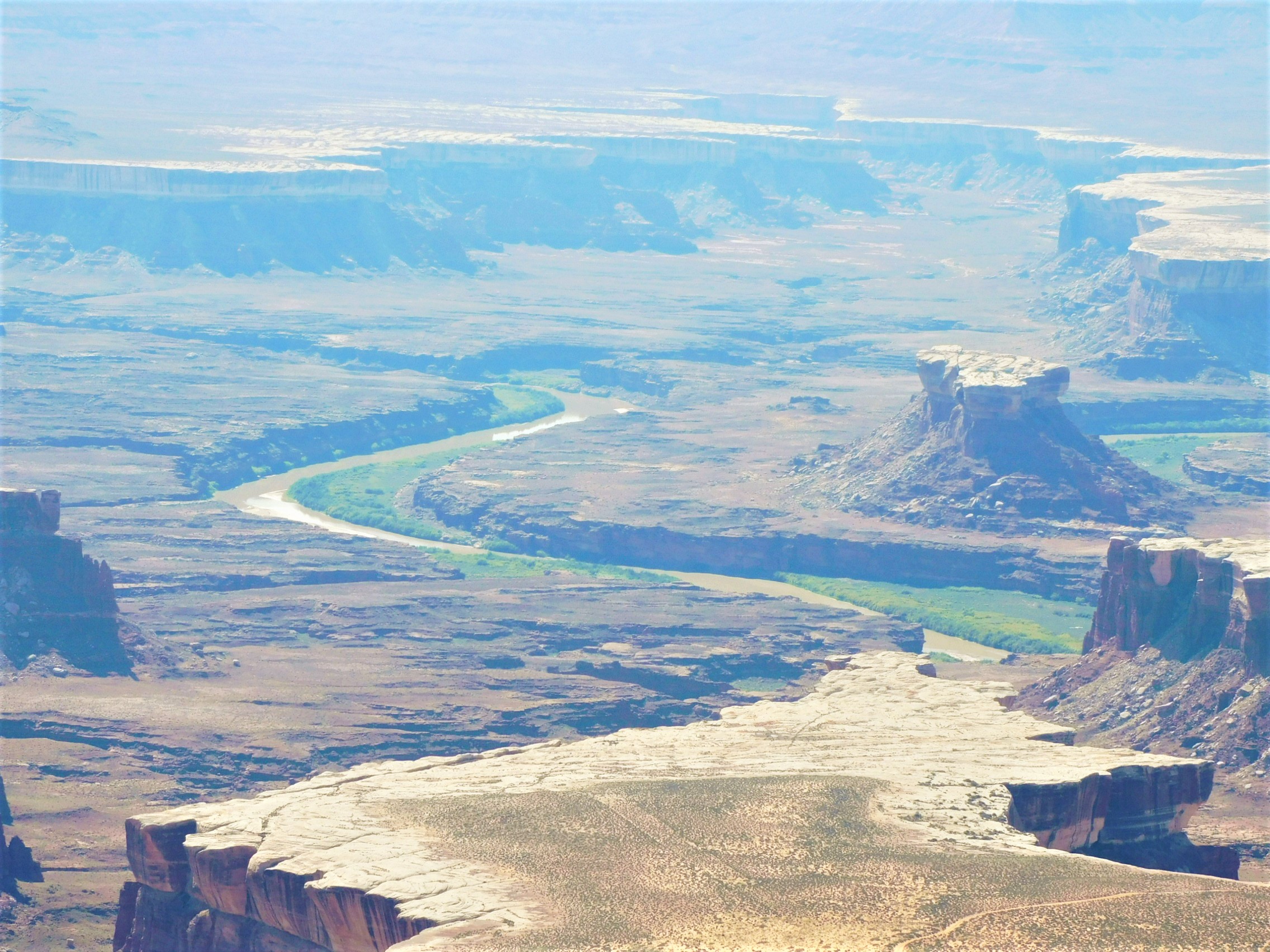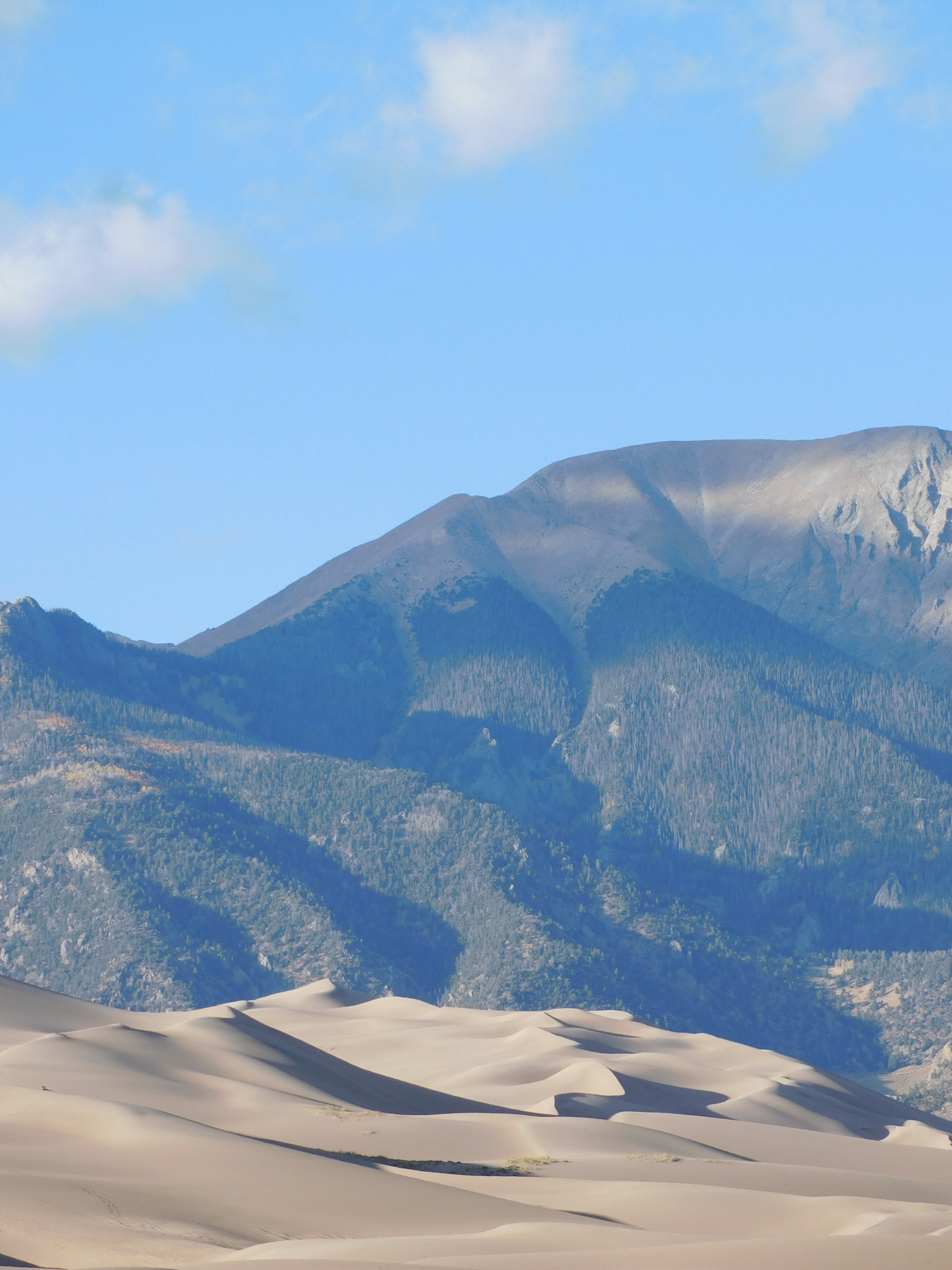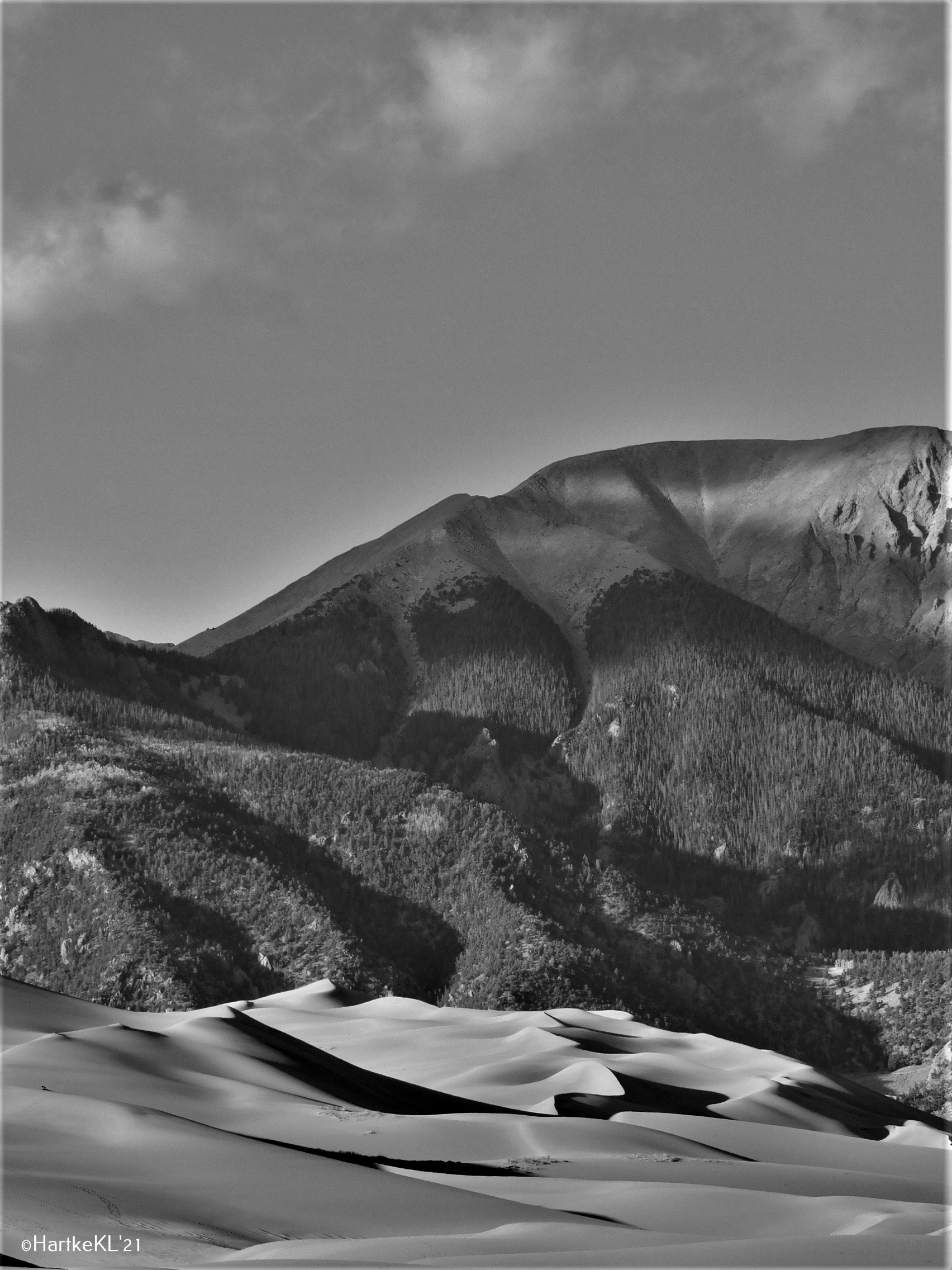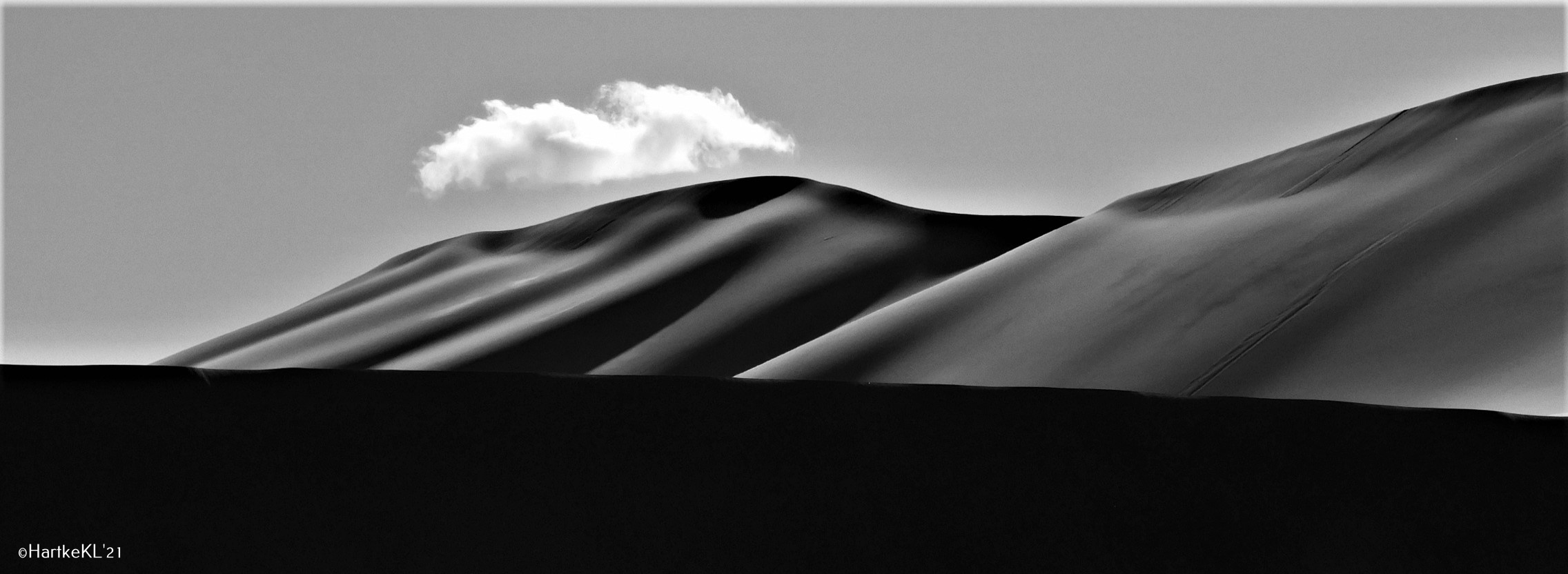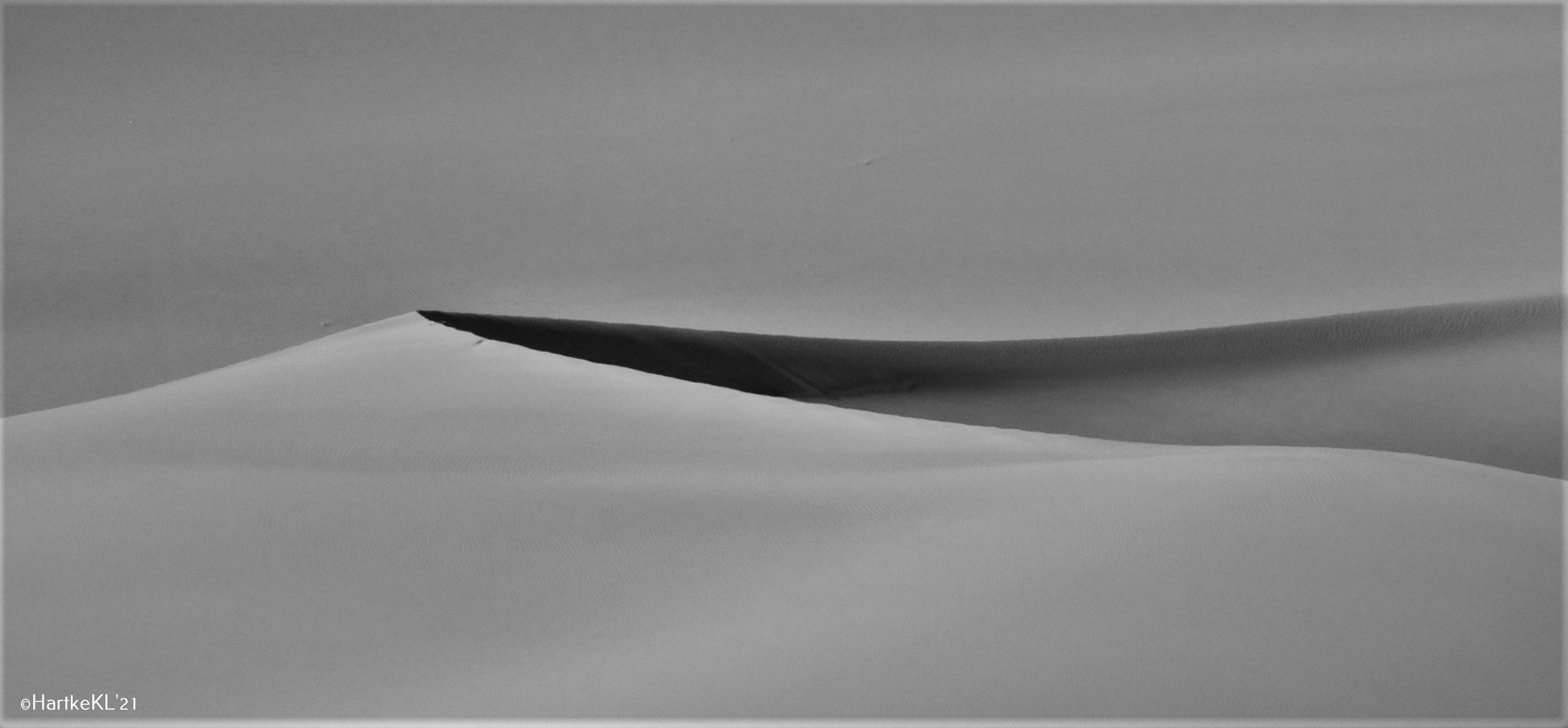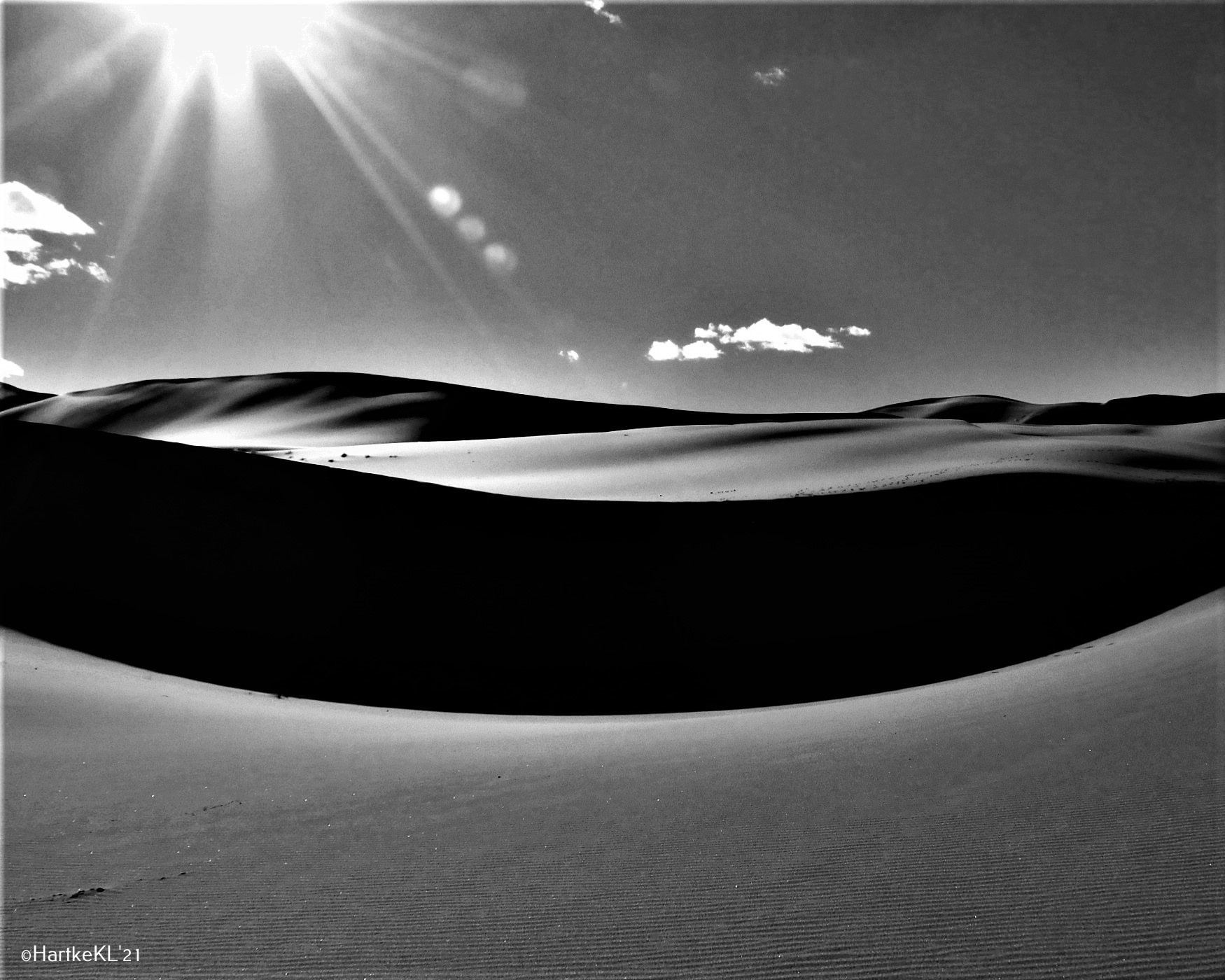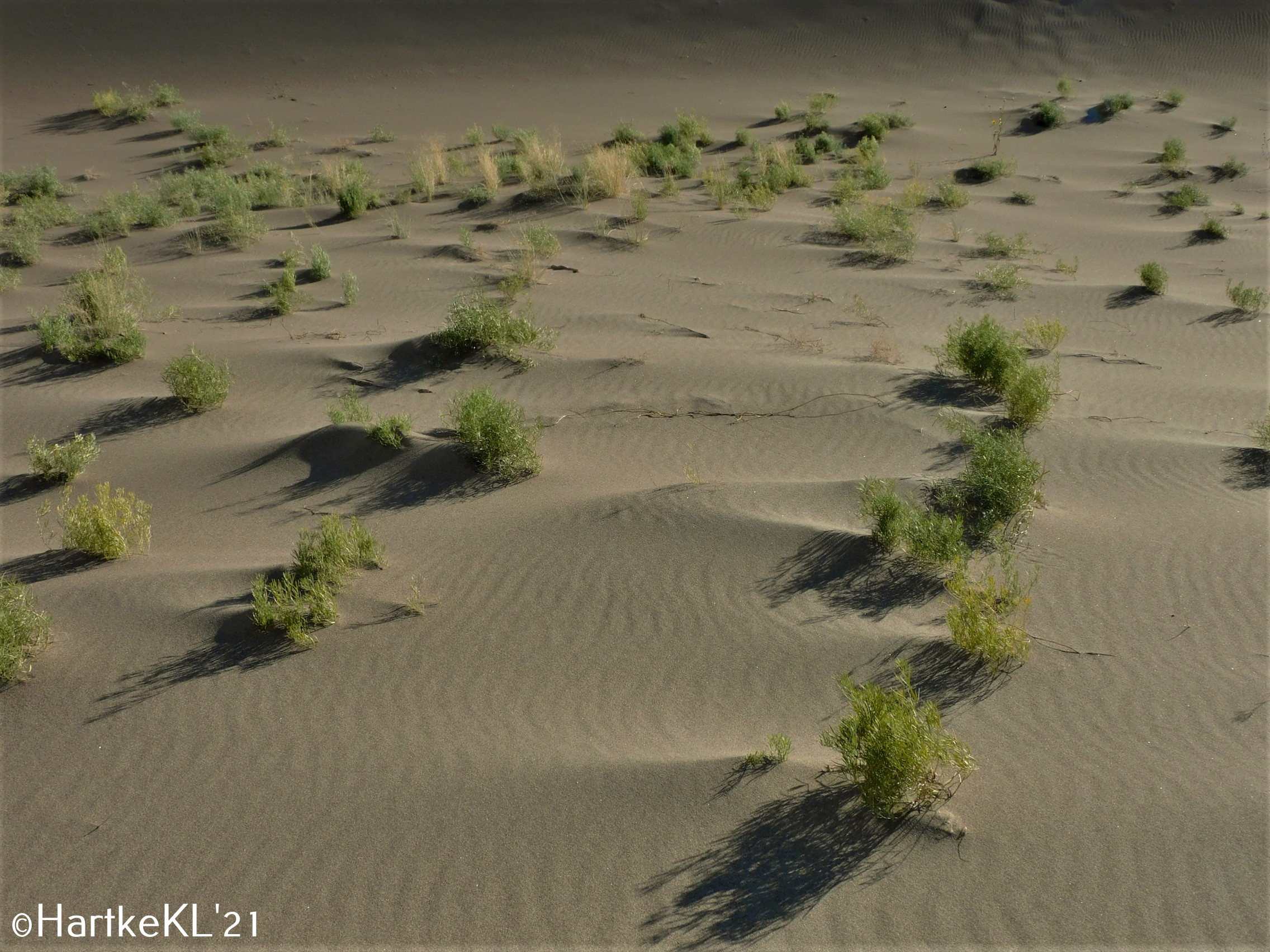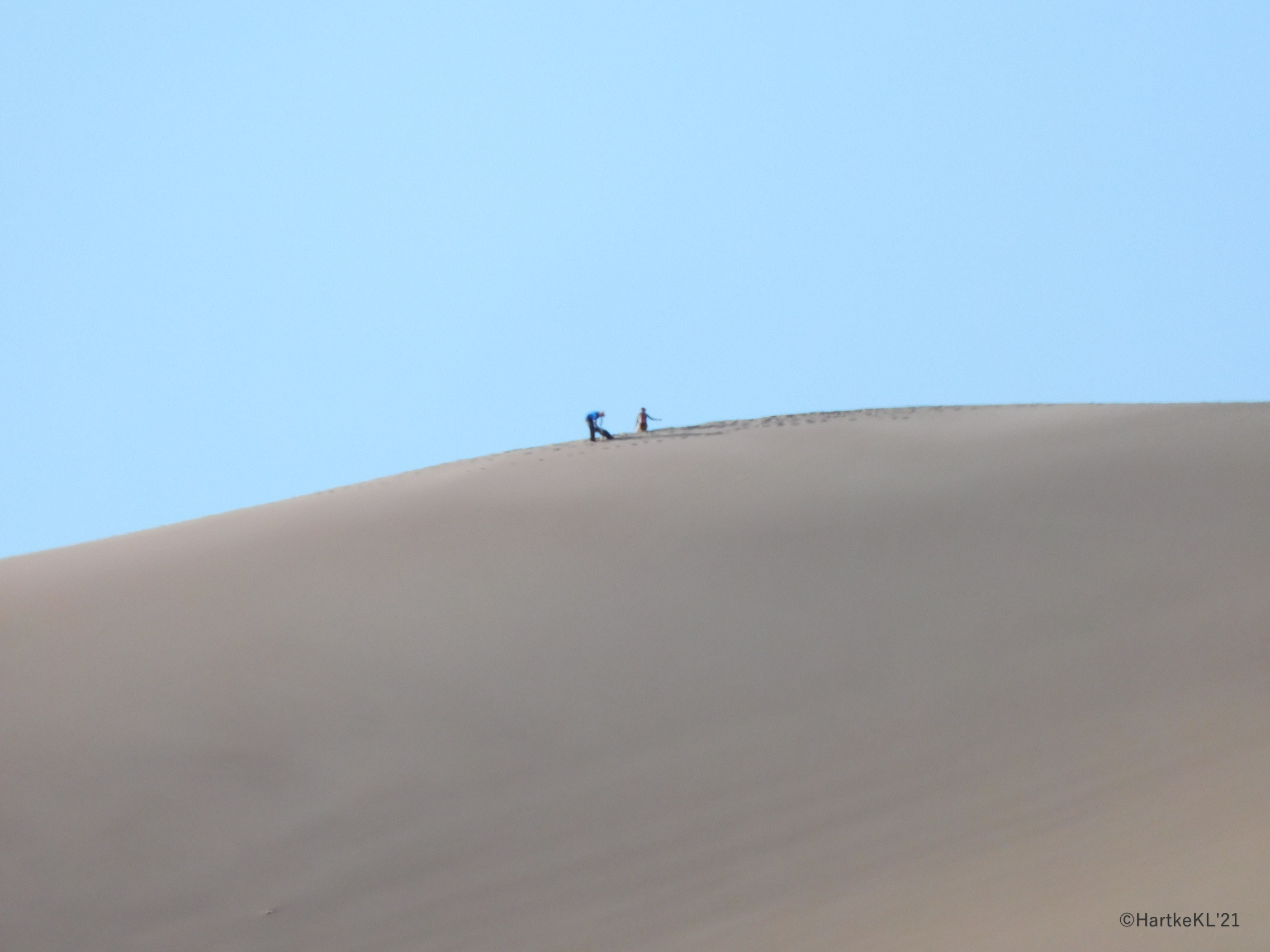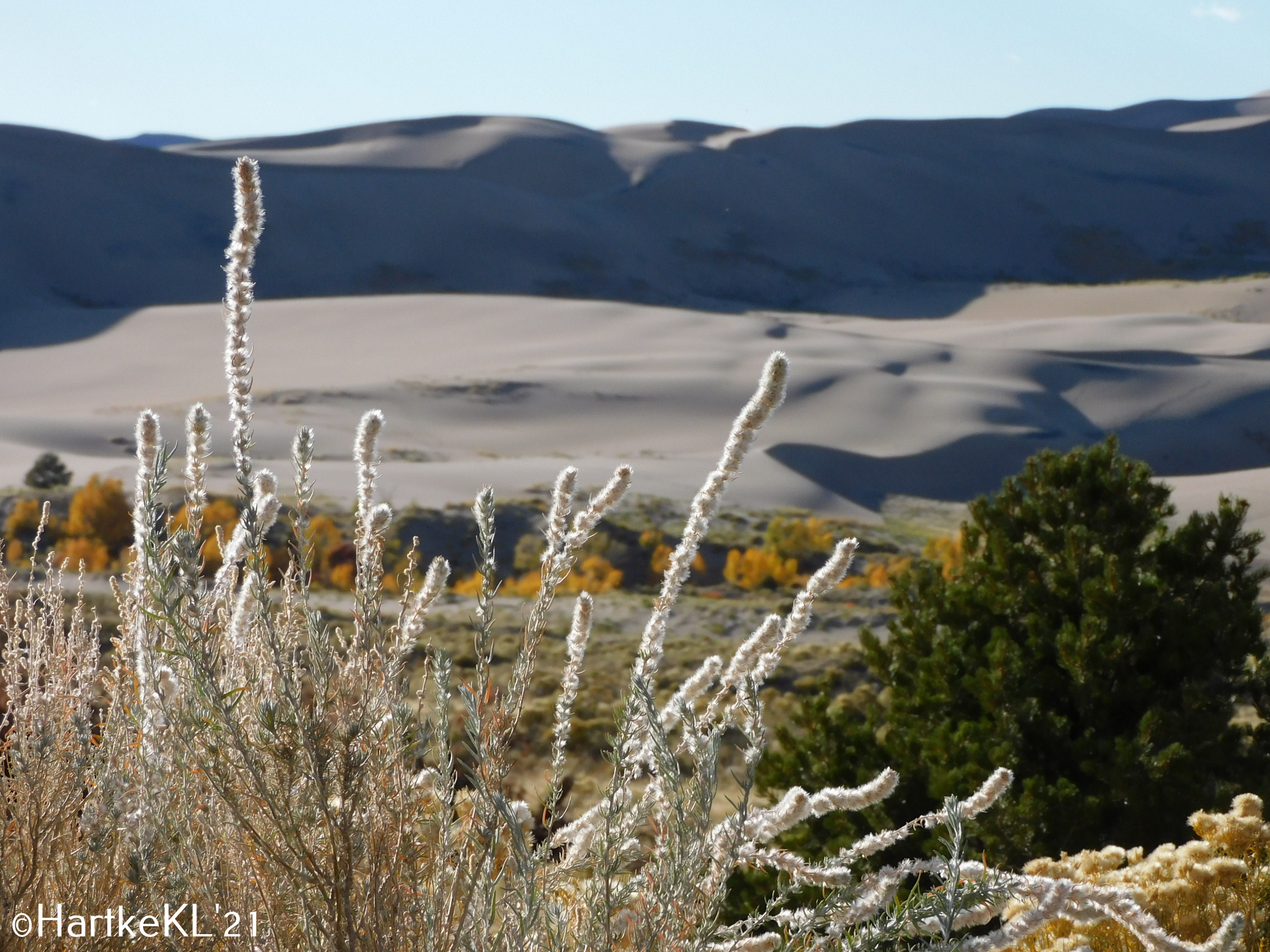My daughter took me to Carlsbad Caverns for Fathers’ Day. I finally got to go — and I feel like I’m almost the last person who hasn’t seen it based on stories from friends. It is a wonder of wonders, just like they all said. Bear with me — it does involve photography.
Getting there has been the challenge for me over the ten years that I have lived in New Mexico. Even though it is in the same state, it is a 750-mile round trip journey from Rio Rancho to Carlsbad and it is not the most scenic route. A month ago, we had occasion to spend a weekend in Roswell, another new place for me, and it was a reasonable and enjoyable trip. We had a nice stay — so we figured that we could stay in Roswell again and make a day trip to Carlsbad – there and back. From here you go east on I-40 to Clines Corners. That is the roadside emporium where you can find almost any sort of tourist paraphernalia you want. Rubber tomahawk? You got it. Hat or Cowboy boots? Yep, pardner, right over there. A full cowhide? Sure, why not? Popcorn, peanuts, candy-coated snacks? You bet. Bathroom? Yessiree. The scenery was typical interstate up to that point. From there it was straight down highway 285 onto the high plains – let me emphasize straight. It is a better road than the interstate because nobody is on it. Dual highway straight to Roswell and then on south to Carlsbad.
People complain about the high plains as they drive the interstate. Off of the interstate it reveals a different character and timelessness. I like driving backroads through Kansas and this was similar but no corn or soybeans — just grass and cactus as far as the eye can see. off in the distance there might be a wind farm, then a windmill and a water tank surrounded by cattle. Then a lonely single-file parade of cattle going nowhere in a hurry — for what? You can see twenty miles ahead and behind and there isn’t anything to get you moving. There are occasional trees that offer shade for a half-dozen cows. The Antelope, that you occasionally see as well as the cattle, must browse the tree leaves and branches and open up space for the cattle. Mighty considerate.
You will pass through Encino after a while. You see it ahead because of the trees. It is mostly dead or dying as a town. Halfway to Roswell is Vaughn. You might have noticed the freight trains over on the left (east) at some distance. The railroad has a presence in Vaughn. I think it would be a ghost town otherwise. You will be hungry and wanting to get out and stretch by the time you get to Vaughn, especially if you didn’t go into Cline’s Corners. Vaughn has Penny’s Diner — a retro shiny metal-sided recreation of the old diners of bygone days. It is part of the Travelodge that sits back behind it and part of a chain of diners associated with that motel. I had a classic BLT that was great. The manager/waitress/motel clerk/server/cashier was doing temporary duty in Vaughn in that capacity — shipped there by Travelodge for two weeks from Yuma, Arizona because there was nobody local in Vaughn who would or could do the job. Somebody had to mind the store — the railroad crews seem to be local customers and were not going away. The freight line was pretty busy.
After our sojourn in Vaughn, we continued across the plains to Roswell. I think I talked about Roswell before. It hasn’t changed in the last month. We ate at a nice Mexican restaurant. The primary entertainment back at our hotel was the US-Mexico soccer game — a shitshow that was eventually ended a few minutes early due to Mexico vans’ bad behavior — shouting homophobic slurs and throwing stuff on the field. The US team won 3-0.
The road to Carlsbad is much the same except for oil wells instead of wind turbines. I wonder why? Artesia still smalls bad due, I guess, to the petrochemical plant. Oil and gas seems to be their bread and butter here in Artesia. The state’s largest refinery is here. As a curiosity, check out Artesia’s old Abo Elementary School in Wikipedia.
Moving right along, Carlsbad and the caverns are about another hour or so ahead. Carlsbad has a fresh coat of paint, new buildings and businesses, and is looking pretty good. The money and investment is coming from somewhere — maybe more of that oil and gas money? It’s a town of about 32,000 residents and the Carlsbadians are doing pretty well from the looks of it. At Carlsbad you take a right onto highway 62. The caverns are actually located at White’s City, another ten miles along highway 62, you can’t miss it. (Mr. White was an early cave explorer who was responsible for getting things going.) Entering the national park, you drive another five miles or so through a winding canyon and climb out at the top of the hill to arrive at the main park visitor center.
Time for a little geology.
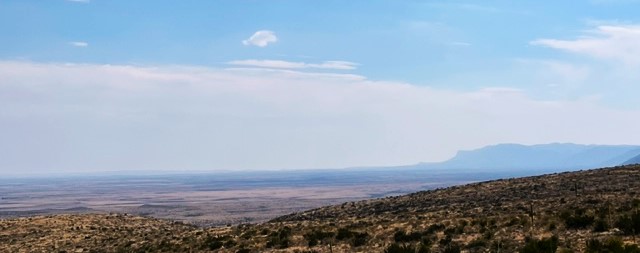
Some 262 million years ago everything you see out of the car window was under water. There was a large inland sea that covered this part of New Mexico and into much of west Texas. Tiny organisms, sponges, and algae lived in that warm sea (we were close to the equator back then) and they (somehow) came to the decision to build a reef. They did that for a few million years, building up a huge reef by any standards, hundreds of feet thick. By and by climates and earth forms changed and the inland sea’s only little outlet to the wider global ocean was blocked. It dried out. Another sea came back some millions of years later and deposited sediment on top of the reef and the old seabed. That sea left, too. Millions of years pass and there was an uplifting and various contortions of the earth surface. The reef was re-exposed and acidic groundwater began to percolate down through the now-consolidated limestone of the old reef. Air pockets formed and enlarged and then greatly enlarged until, voilà, the Carlsbad Cavern cave system was born. It has existed for over 500,000 years adding, and probably destroying, various cave features and formations as time passed. The dinosaurs were here more or less from 200 million years to 66 million years ago when the big mass extinction took place. Some small mammals survived as did some flying dinosaurs. The bats arrived at Carlsbad sometime later.
Speaking of bats. most of the people I spoke with were hugely impressed with the evening bat flight out of the cave entrance during the warm months. About a million of bats all exit the cave at the same time. I spent ten years exploring caves, large and small, back when I was an immortal being, about age eleven to twenty. There was no hole too small for me to wriggle into and I often wonder now how I survived. About every fifth “wild” cave is named “Bat Cave” and there is good reason for that — they are often full of bats. They pretty much ignore cave explorers but since we sometime occupy the same space — you get to see your fill of bats. I was never touched by one — they are amazing creatures. They eat tons of bugs each night. I have an old blooming Agave plant in my yard that is pollinized by bats at night. I just didn’t want to see a million of them. Maybe next time.
Bats live only in the upper portions of the cave near the natural entrance. You do actually see a lot of bat evidence as you enter the cave through the natural entrance. The creatures you see flying around the cave entrance are birds, so you get to see bird evidence, too.
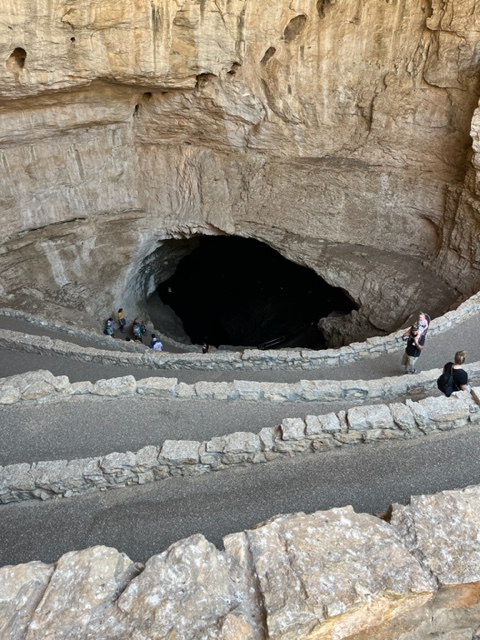
The natural entrance (as opposed to the elevator entrance) is a challenge. There are lots of switchbacks — God knows how many — as you descend into the cave. I think my knees might know how many switchbacks there were. You actually descend about 800 feet below the surface on the self-guided tour. The ranger-guided tour might go a bit deeper than that. You slowly lose sight of any daylight, and the walkway is damp and a little slippery. Some people are helpful with flashlights or iPhone lights, but your eyes really need to adjust to the darkness as the park service has not provided much light to help you on your way. Do not attempt this natural entrance unless you are fully fit and steady on your feet. (Read that sentence again.) I am nearly 75 and a bit overweight with a fake hip and bad knees and I made it. There were people who were not managing it very well. I suspect there are some medical emergencies or rescues on occasion.
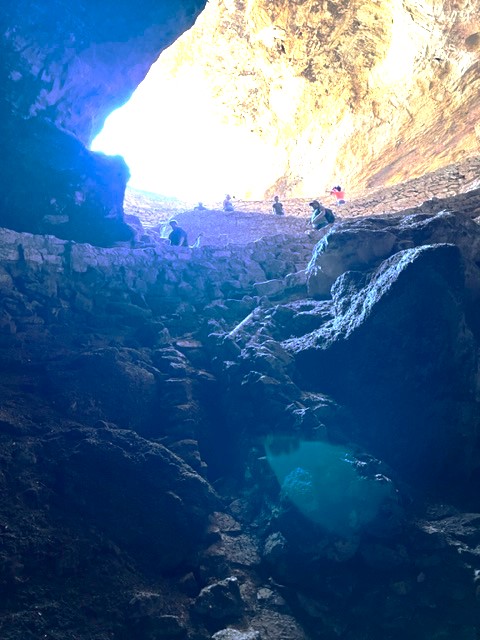
You will do a lot of walking. My step counter said five miles going in, touring, and then coming out on the elevator. There was no way I was going to climb back out the way we came in. It is over a mile from the beginning of the natural entrance to the actual cave rooms that you are there for, mostly in near darkness. There are handrails along the paved walkway most of the way. But the hike in was an experience and I’m glad to have done it. It reminded me of my youth.
The cave is enormous and still being explored. They are still finding passages and rooms farther and deeper into the cave. The website for the park includes a map showing the routes and rooms in the cave that can be visited. You can’t really gauge the enormity of the largest room, aptly named “The Big Room”, and can’t always realize how high the ceiling is above your head. You can see on the map the “Iceberg Rock” which fell from the ceiling some 500,000 years ago. In reality, you can’t actually imagine something that large crashing down, so you look around at smaller things thinking that is what they mean — but you are walking on top of the gigantic rock for some distance.

National Park Service
As you can see, you have a lot of a cave to cover. No strollers so you need to carry that sleepy toddler. Some parents had kid carriers like backpacks. The kids we saw were well behaved and none of them were having a bad day.
Photography Issues
Photography in the cave turned out to be a challenge. I took my usual Nikon camera (Coolpix B600) and probably should have studied up or reviewed the settings, but I couldn’t predict the conditions. If I had all the time in the world, it would have gone better. This is not a typical photo situation. The contrast is so stark between the pitch black (or nearly so) and the spotlighted featured cave formation that the camera was not able to focus and manage the lighting as I was used to. I was disappointed in many of the photos I took with the camera. It worked well under lighted scenes, but I could not hold it still long enough keep the image from blurring in some extreme cases. Conditions allow you to take multiple photos but not fully manage the settings. The walkway was busy but not crowded. I kept about half of the images. I was able to work with some to improve the contrast or shadows.
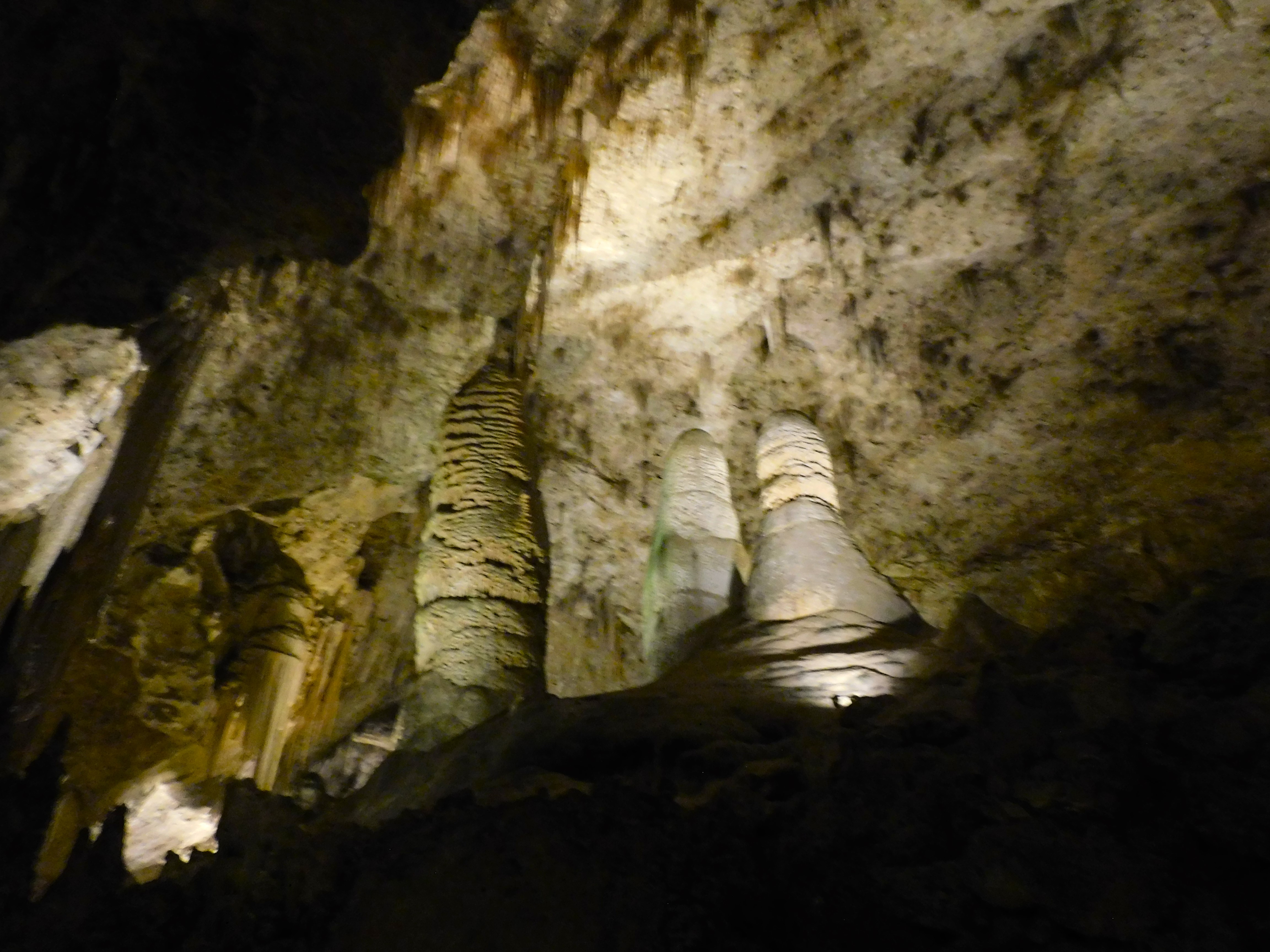
On the other hand, my iPhone camera was able to handle the conditions quite well. I was impressed with the quality. The contrast worked nicely and there was not a problem with blurring from movement.
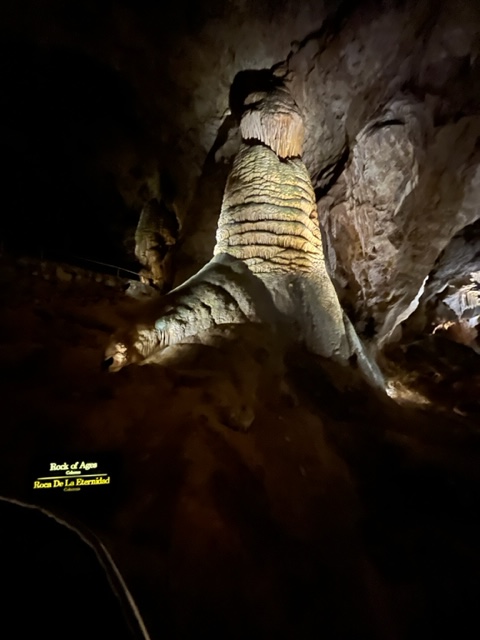

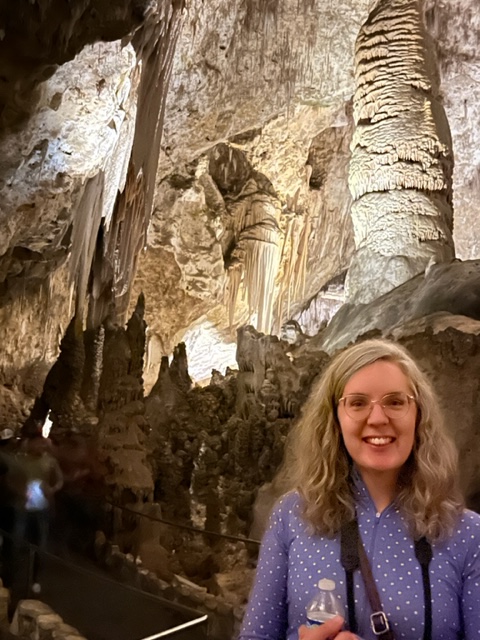
And, of course, a big thank you for such a nice Fathers’ Day trip from a wonderful daughter.
Good to know tip…
When you decide to go to Carlsbad Caverns, you should go online and buy a timed ticket. That will give you a one-hour span of time to enter the cave. Once in, you can stay to tour the whole thing – the ticket helps manage the entries. You also have to pay an admission to the park unless you are in possession of a National Park Pass — like me. When you enter the visitor’s center you are immediately confused by the enormous, and slow, line of people stretching back over 100 feet or more waiting in line to pay admission and get their ticket. If you have a park pass and already bought your ticket and have it with you (on your phone or printed), head over to the information desk to see if you need to get in the line. We were able to go through without waiting in line for an hour. But there is no one there to tell you or a sign that directs you around the line.
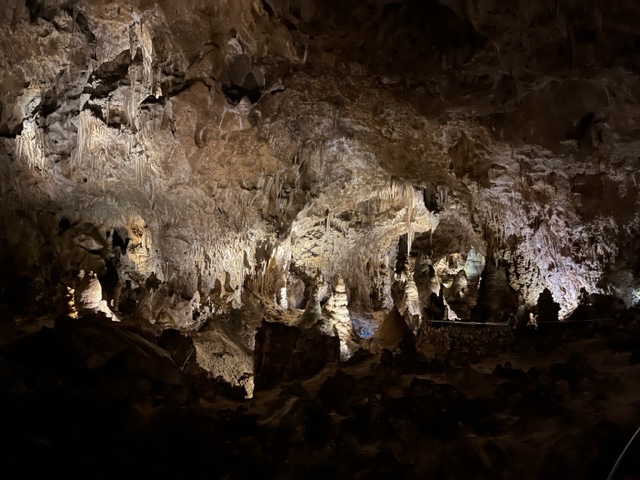
* * *
















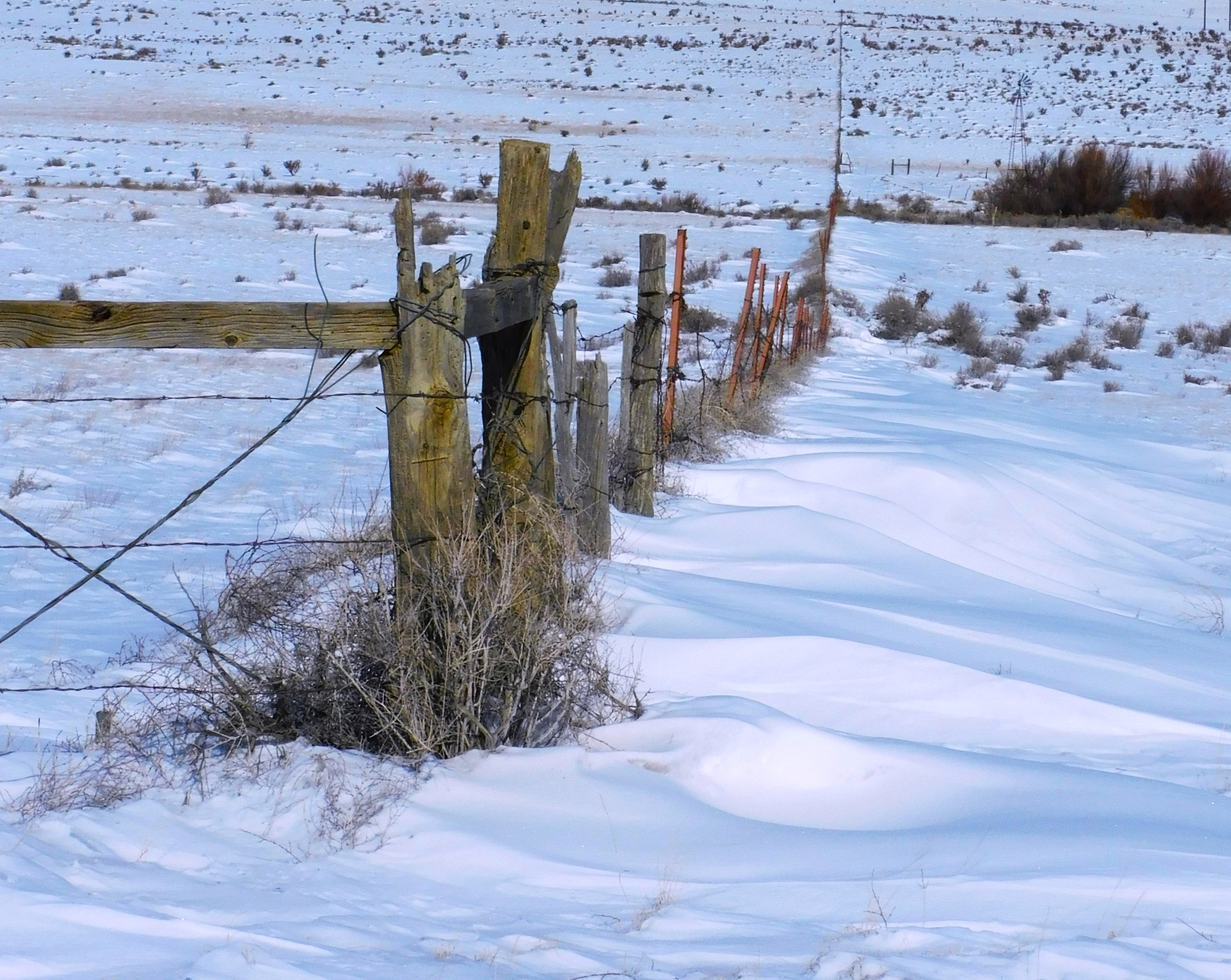
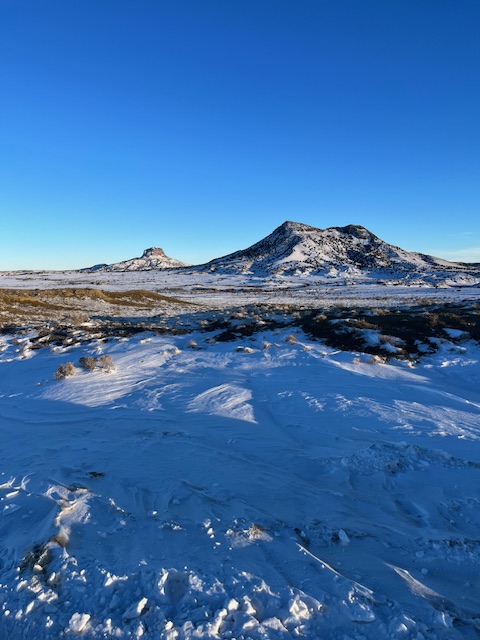
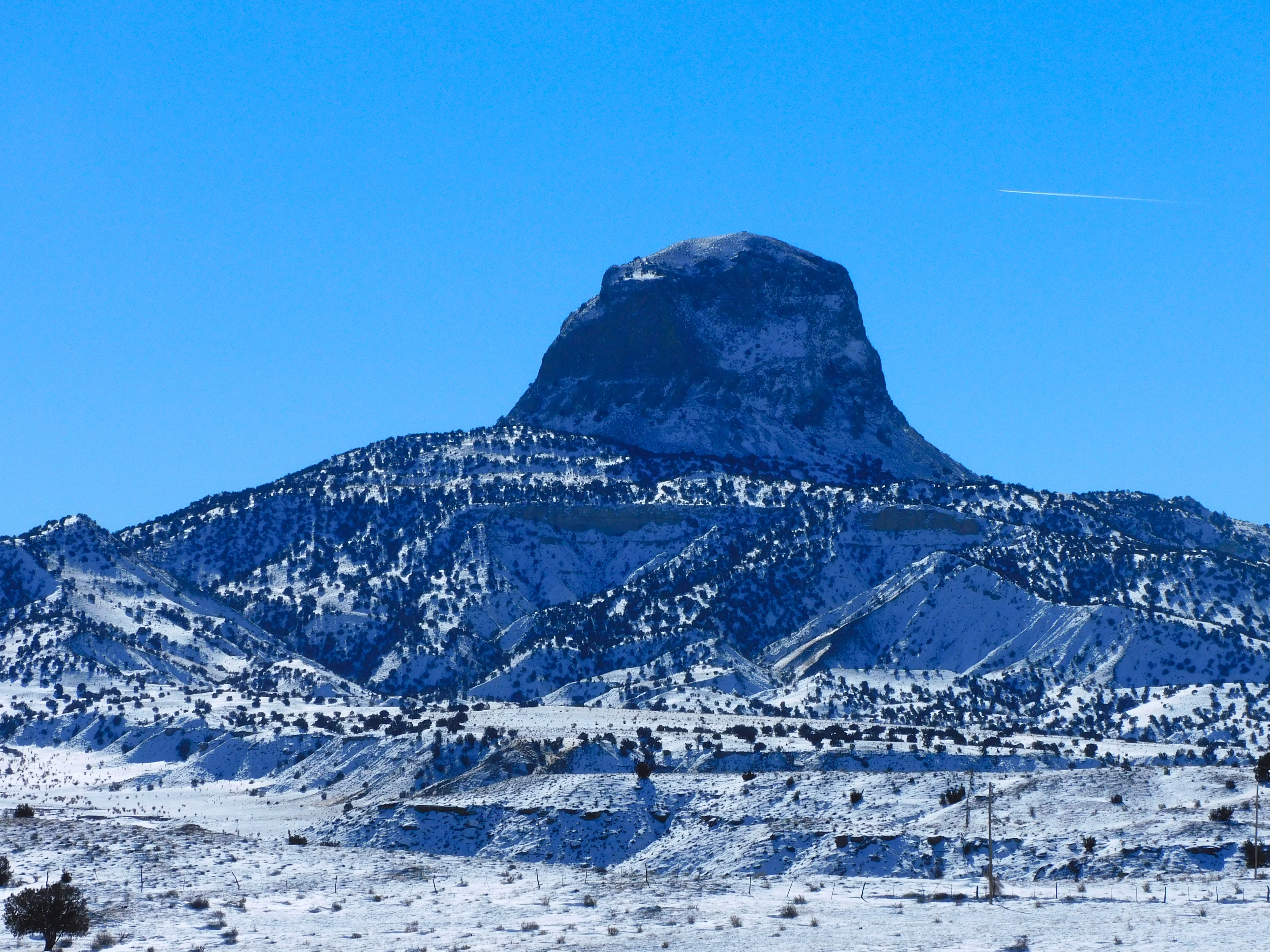
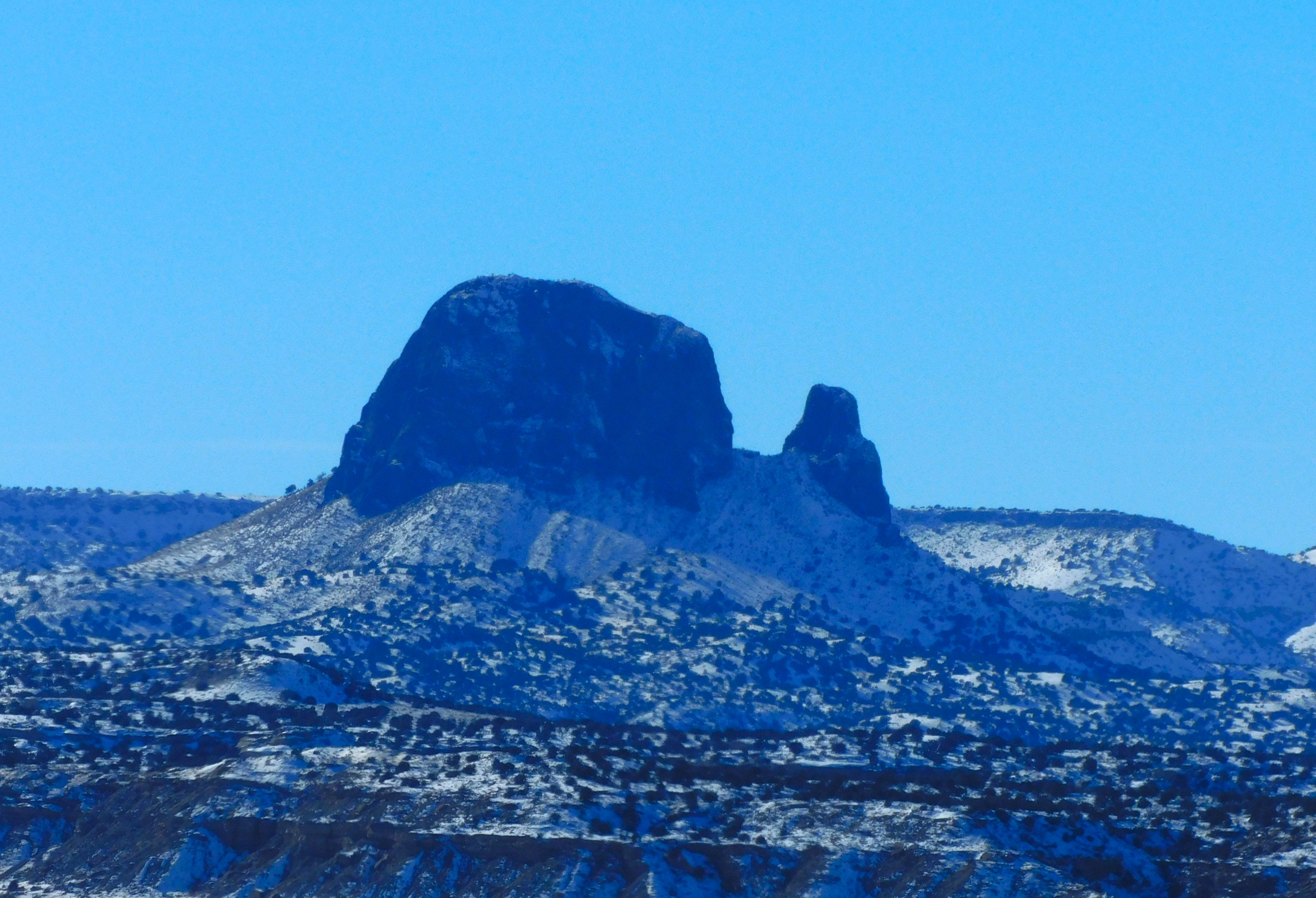
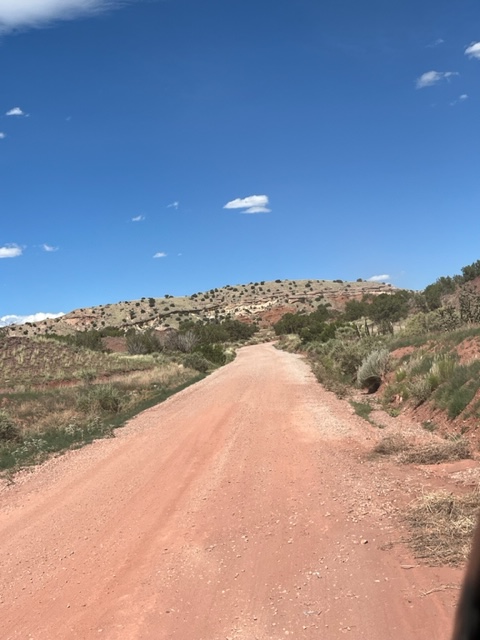 I have a couple comrades who like to get away into the New Mexico outback — like me — and we have been roaming through the Rio Puerco/Cabezon Peak area, went to a mining ghost town, a few other places in the Jemez Mountains, and in the east mountains. We did this recently before the heat made us suspend our adventures. One is a trained geologist — the paleo kind. He is a profesional photographer with his own business. The other is an avid rock hound and scrounger of any interesting debris. He finds some amazing stuff. I’m a photographer and poet and like to ramble. I have an interest in history and some geology training. Here are a few pictures of what we have been up to these past few months. I enjoy going solo a lot of times but at my age it is good to have someone along.
I have a couple comrades who like to get away into the New Mexico outback — like me — and we have been roaming through the Rio Puerco/Cabezon Peak area, went to a mining ghost town, a few other places in the Jemez Mountains, and in the east mountains. We did this recently before the heat made us suspend our adventures. One is a trained geologist — the paleo kind. He is a profesional photographer with his own business. The other is an avid rock hound and scrounger of any interesting debris. He finds some amazing stuff. I’m a photographer and poet and like to ramble. I have an interest in history and some geology training. Here are a few pictures of what we have been up to these past few months. I enjoy going solo a lot of times but at my age it is good to have someone along.






























































